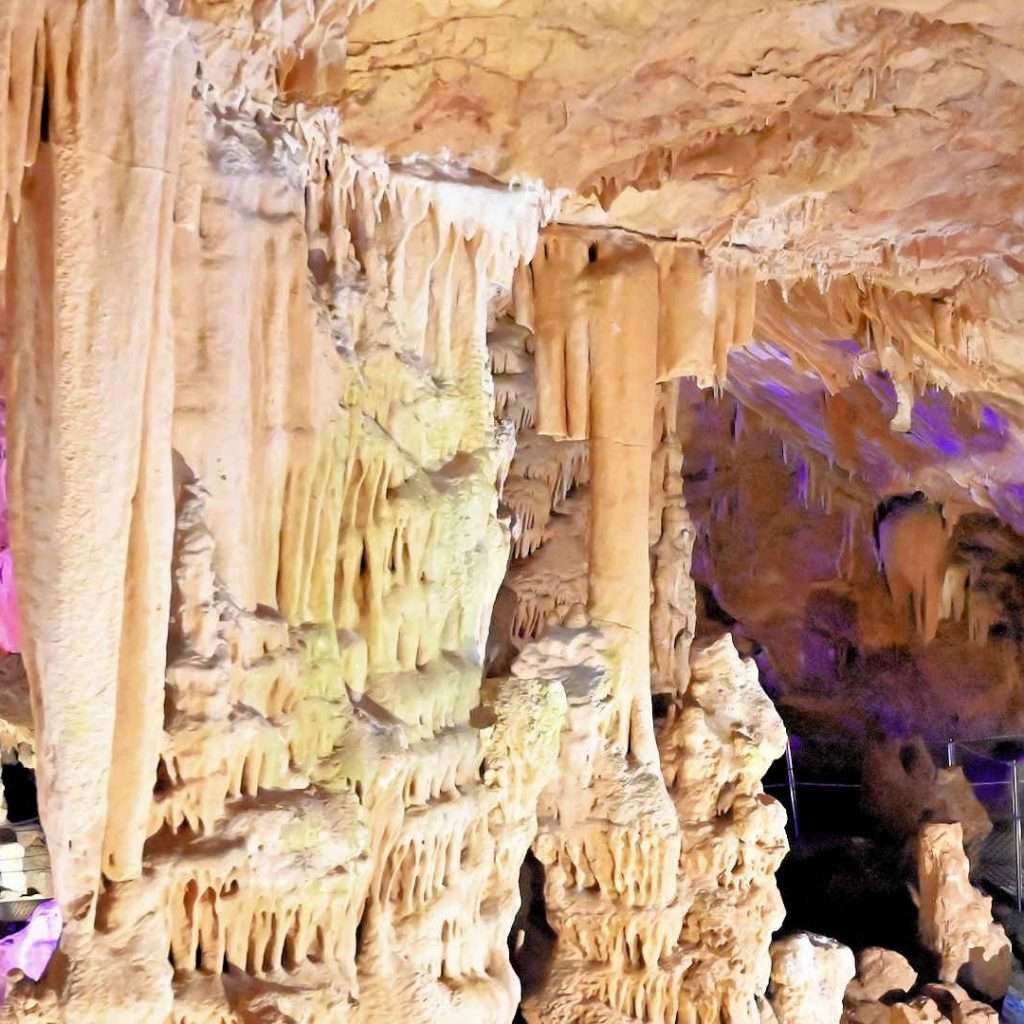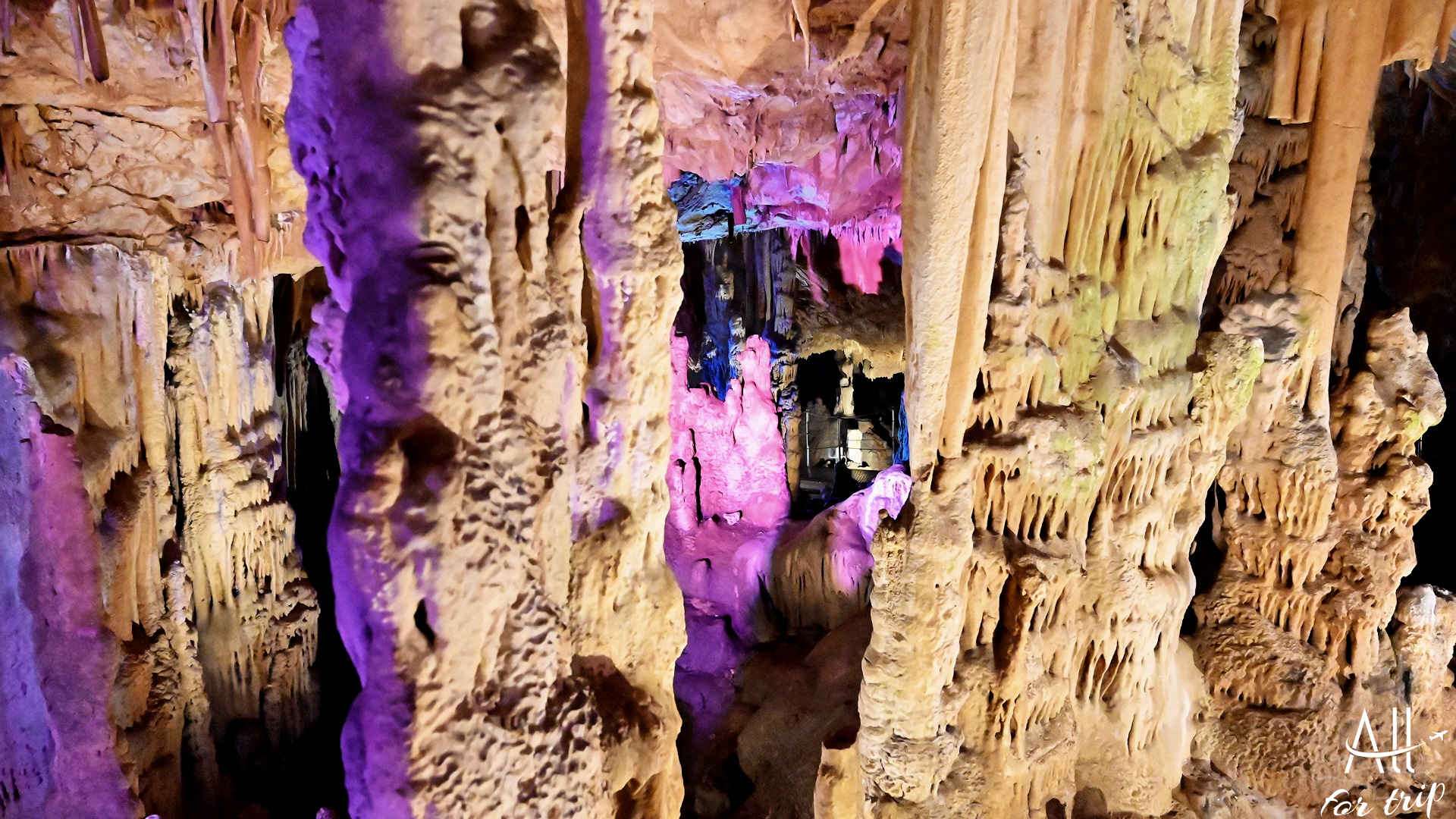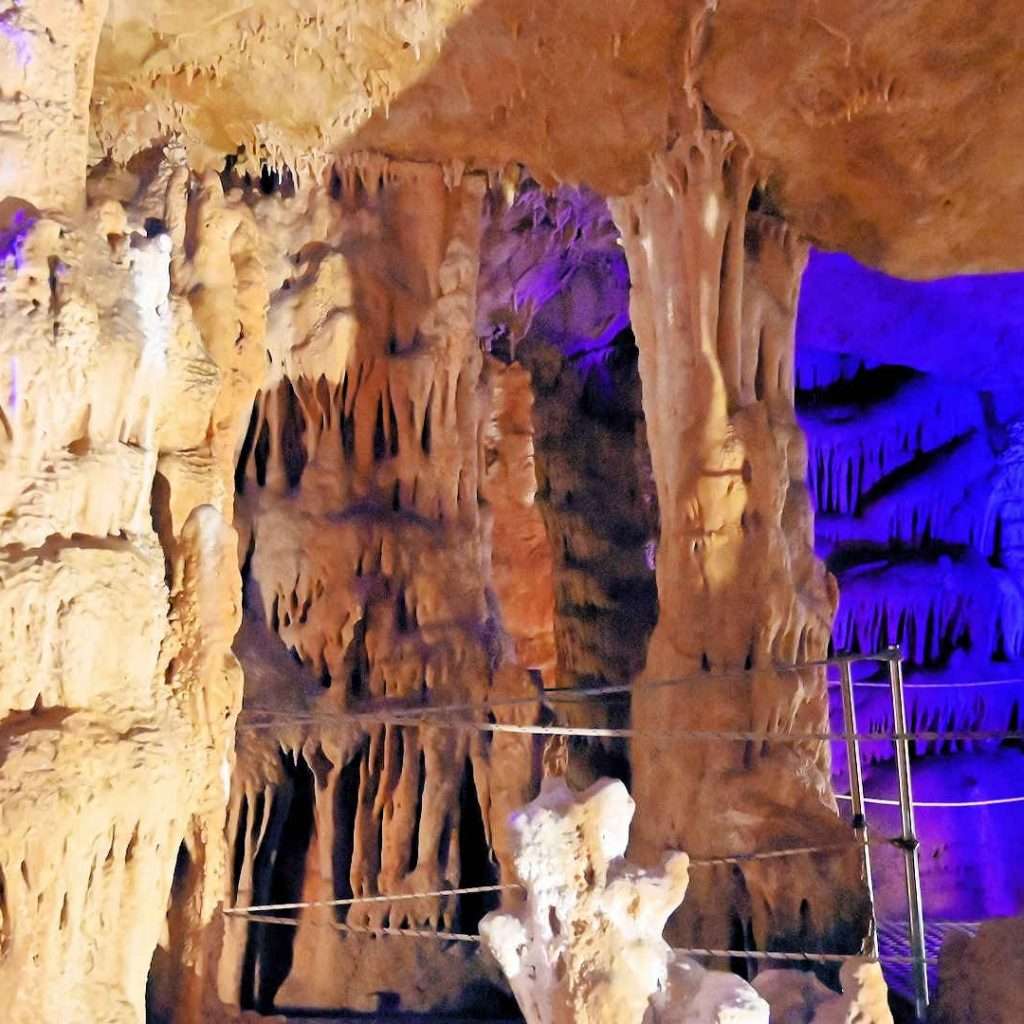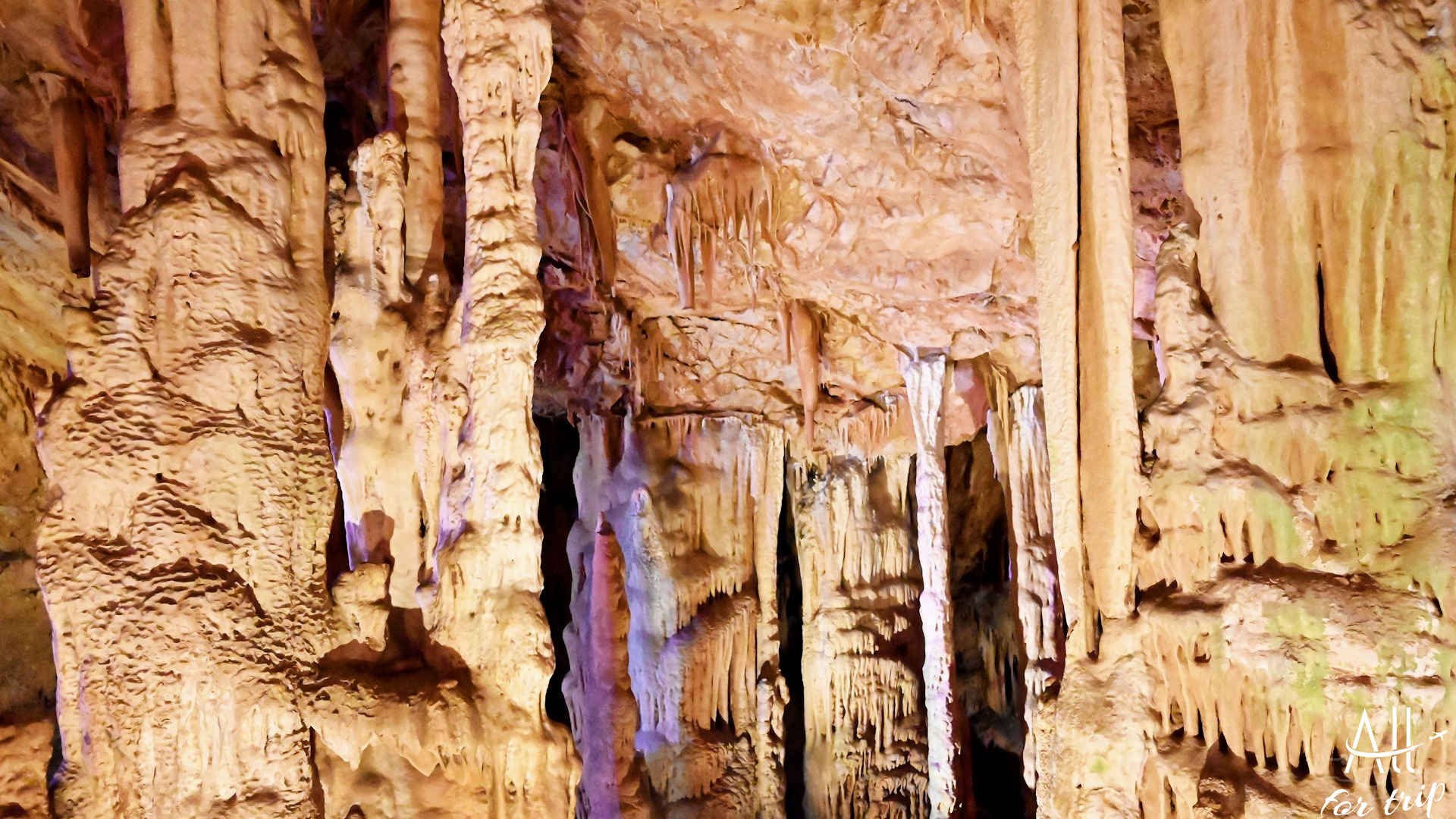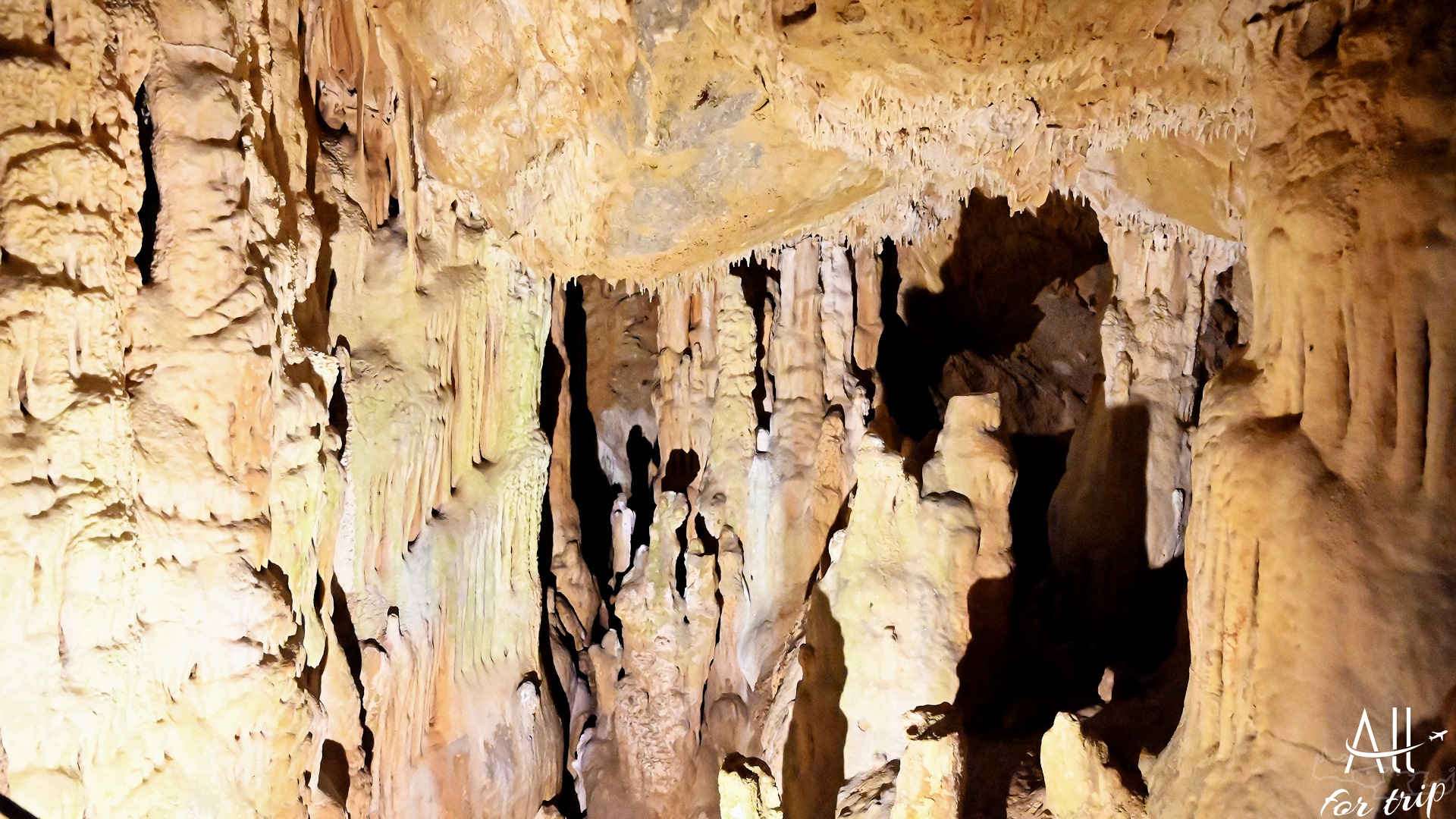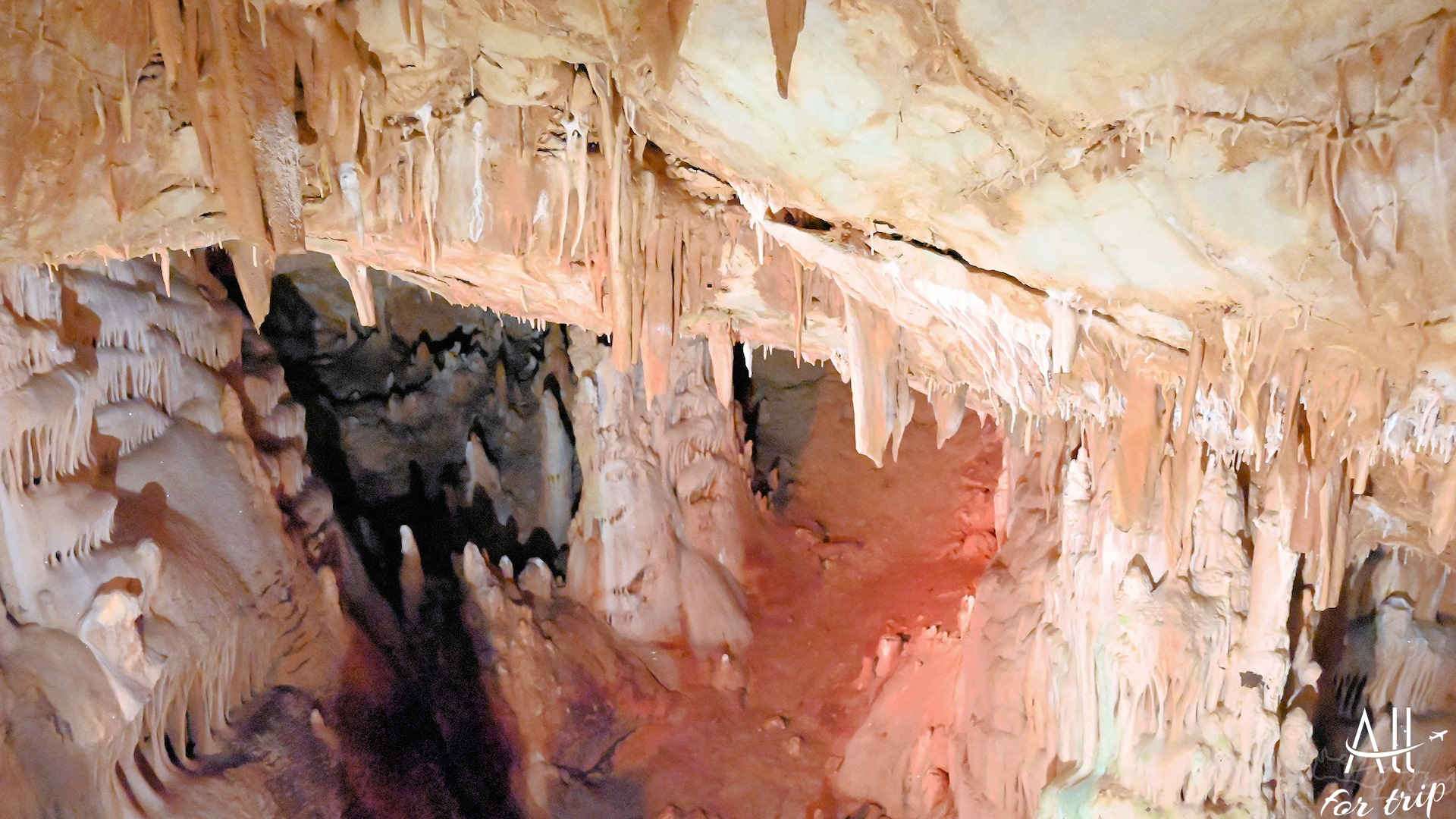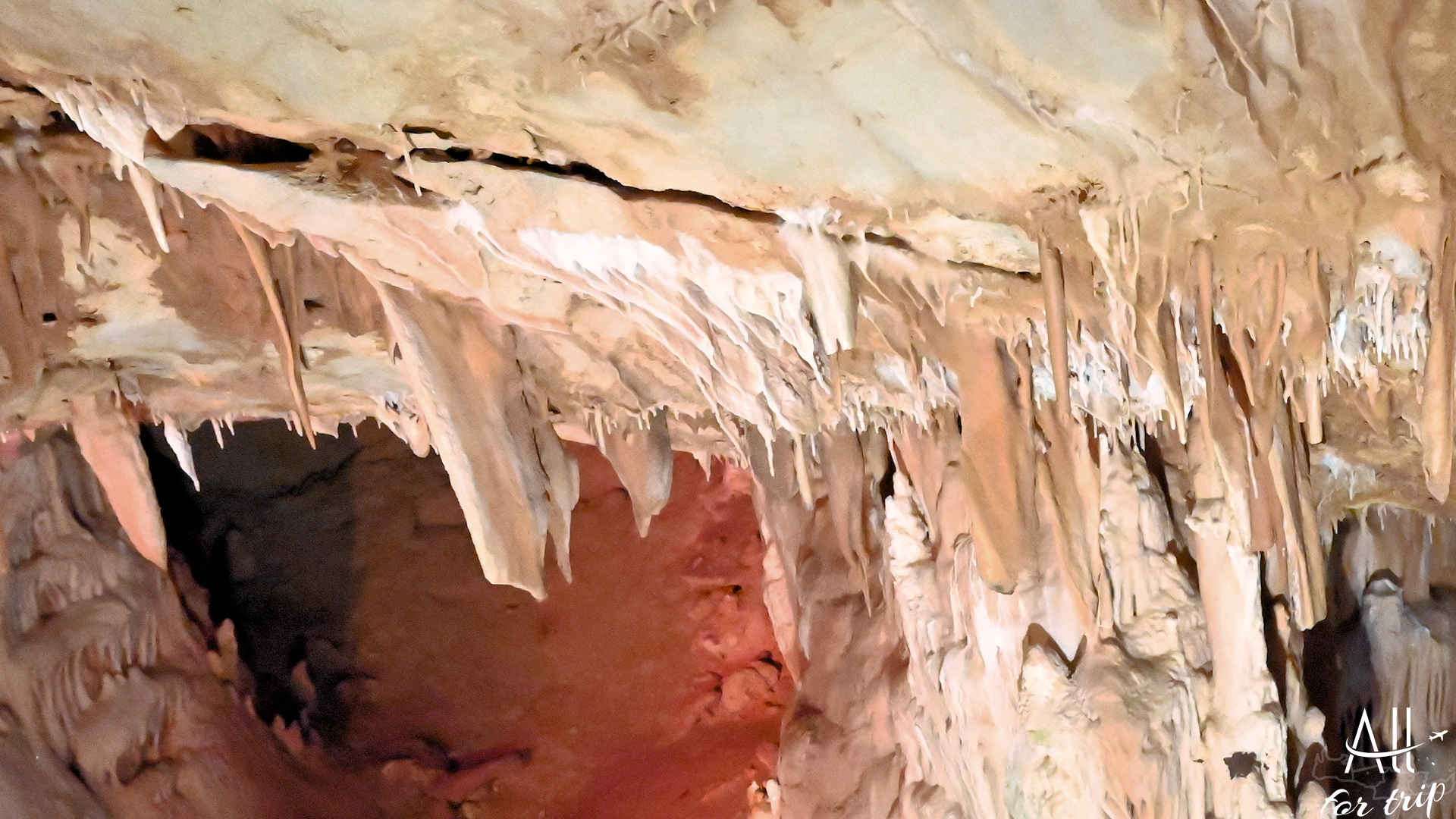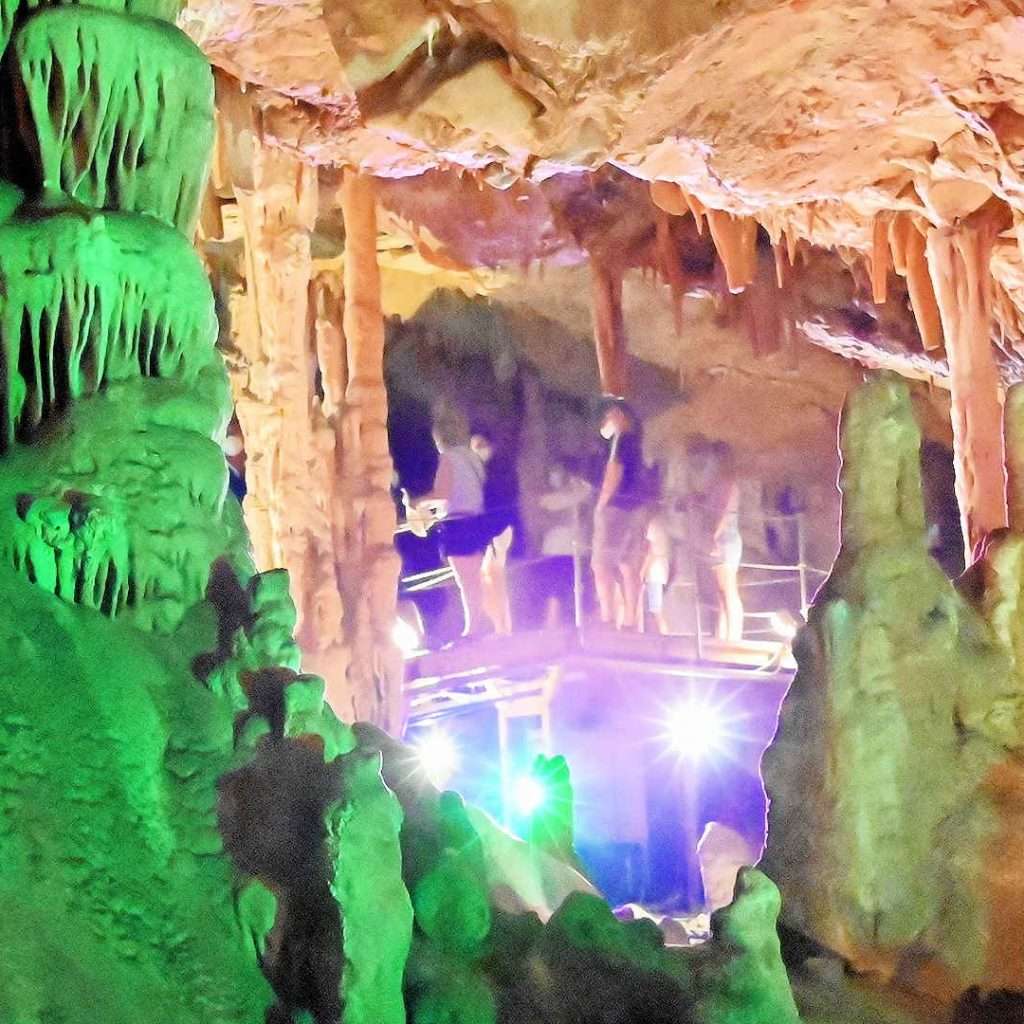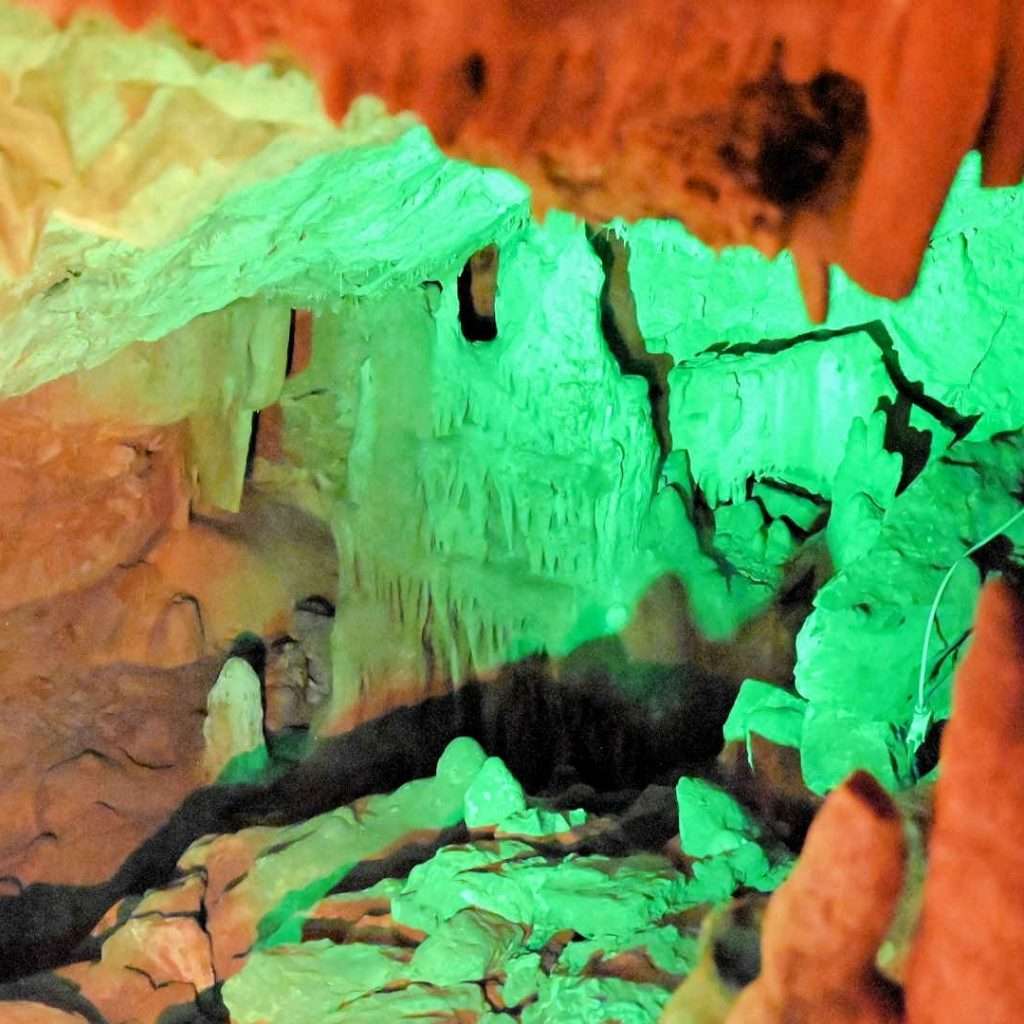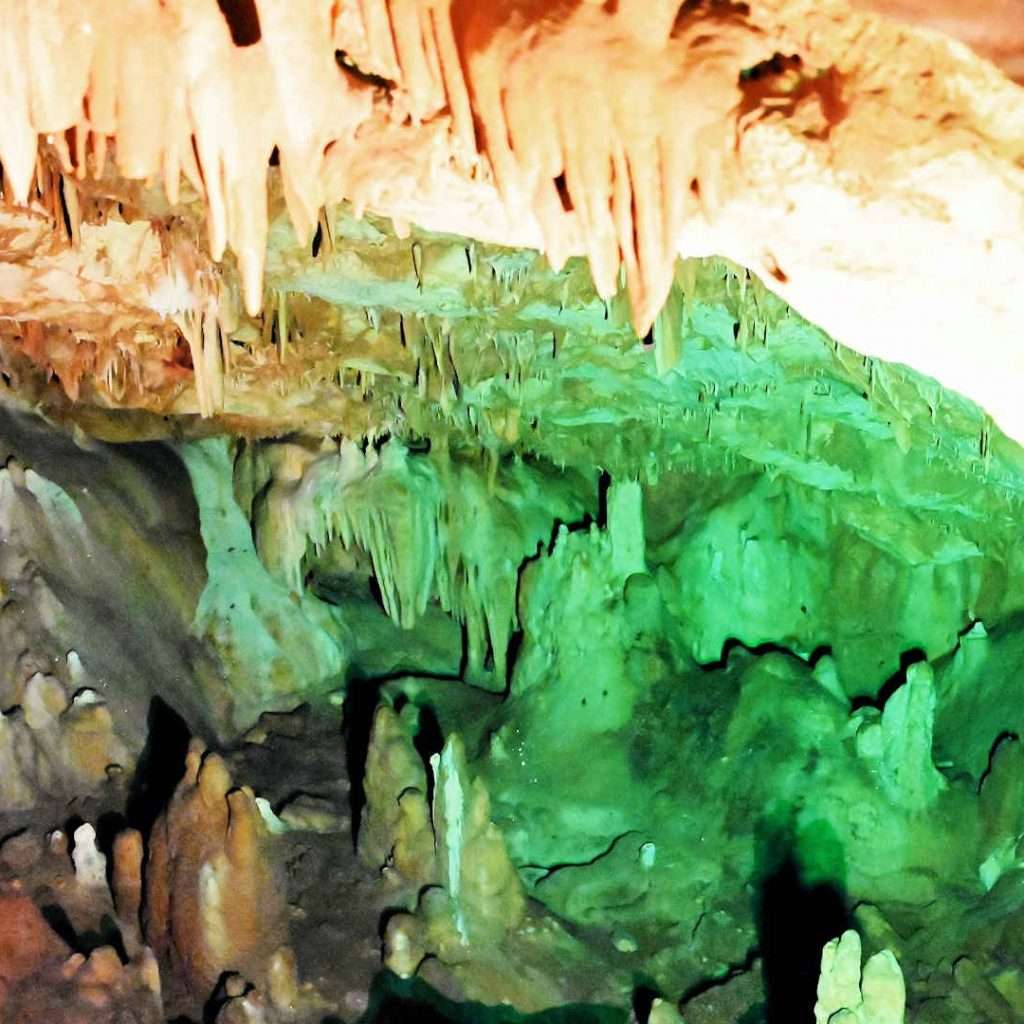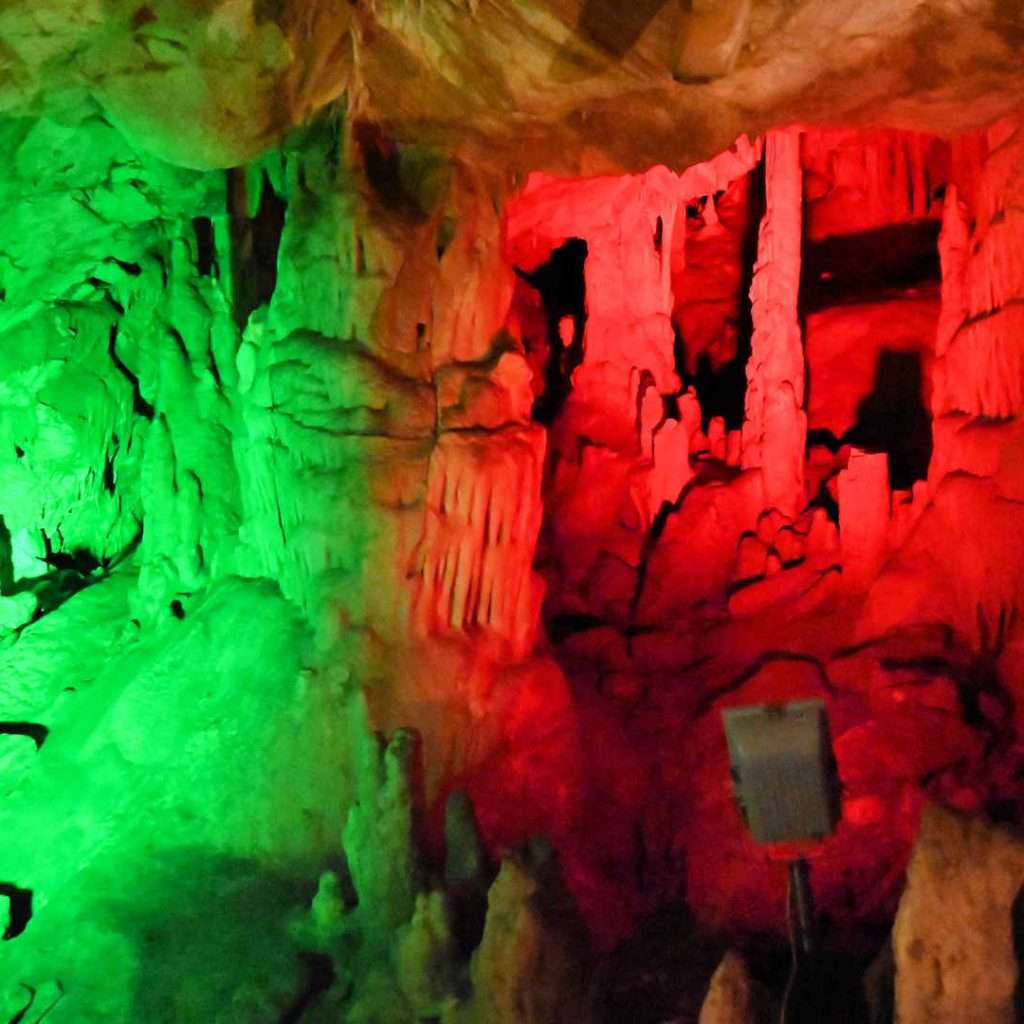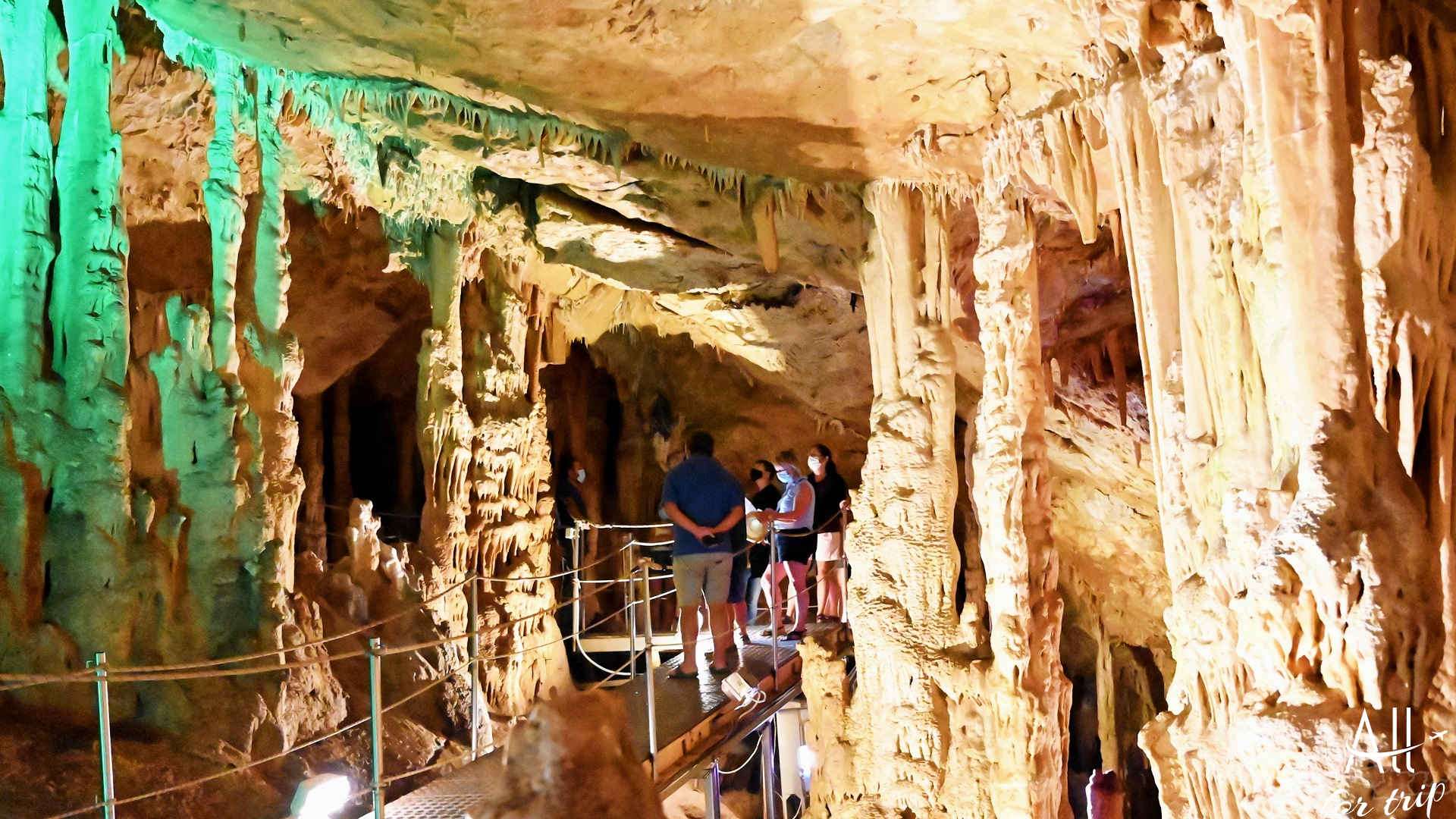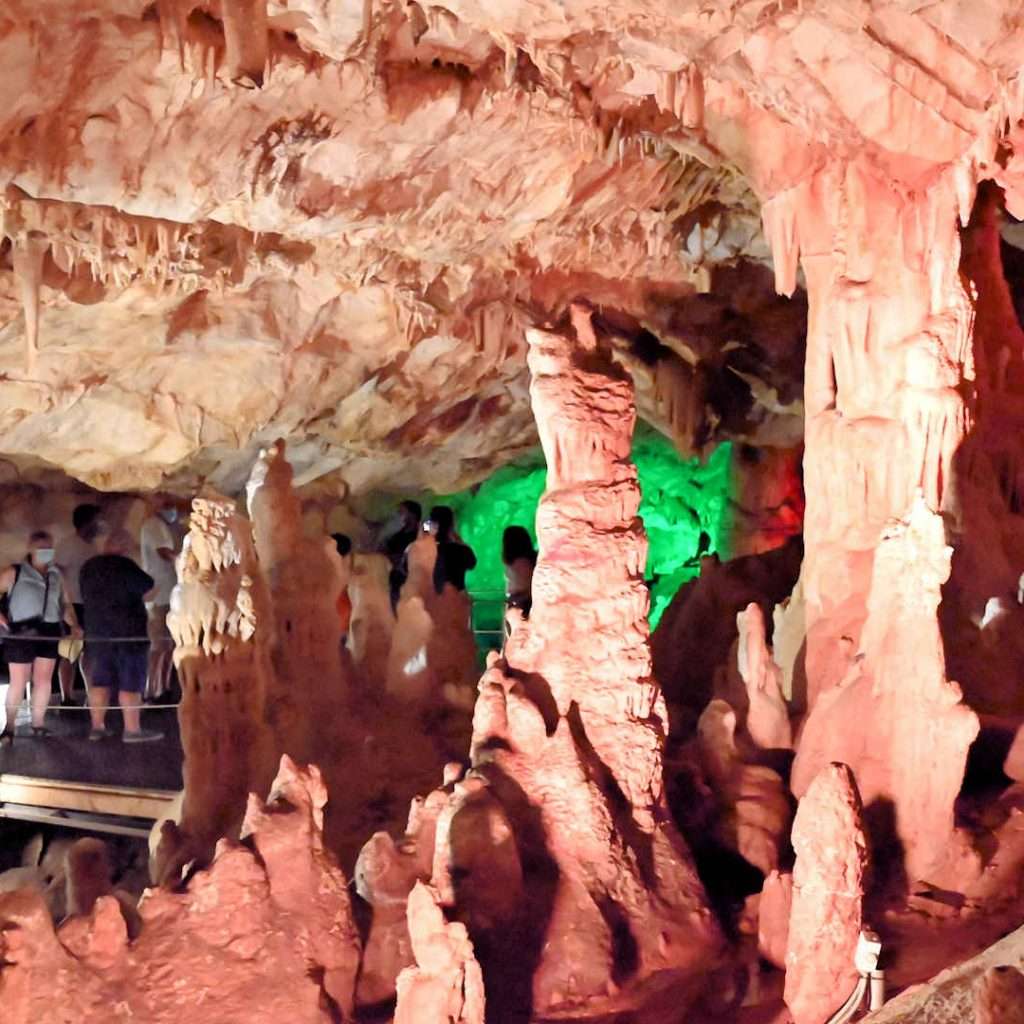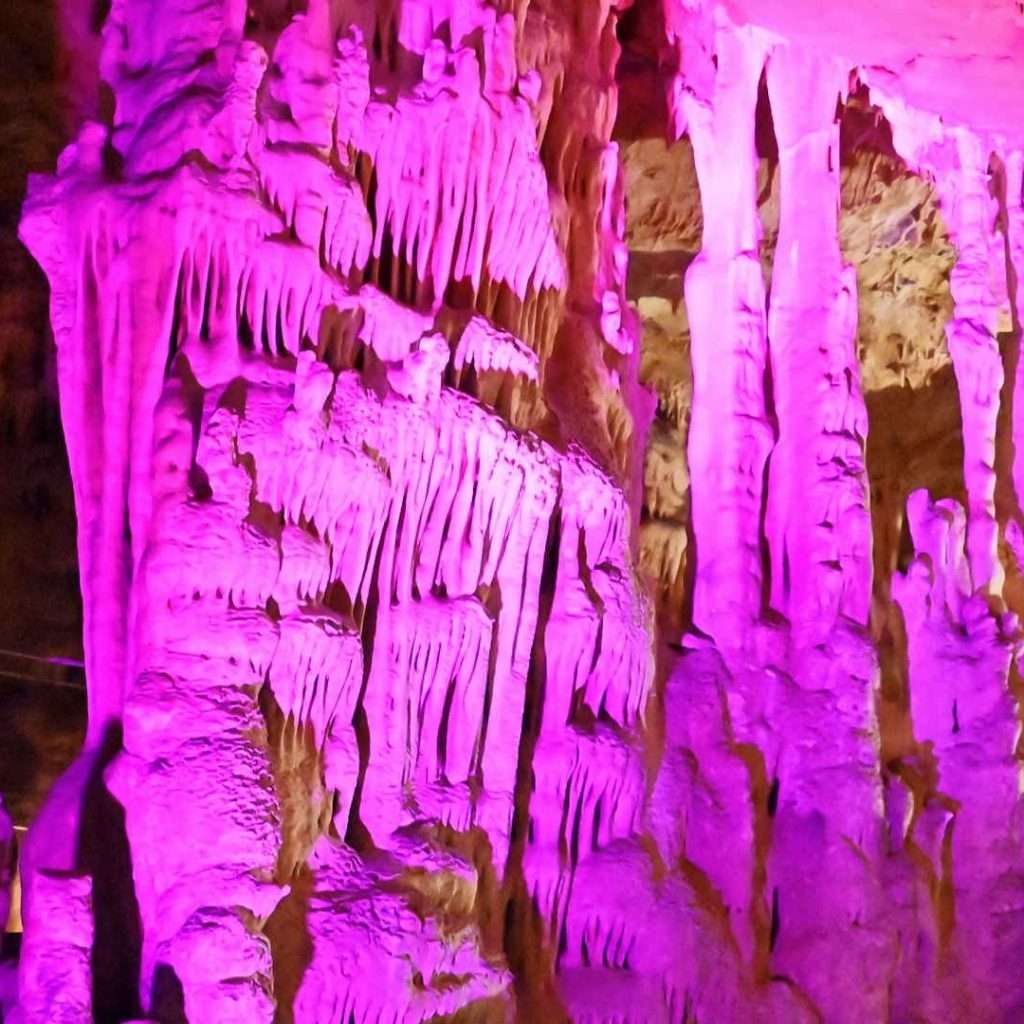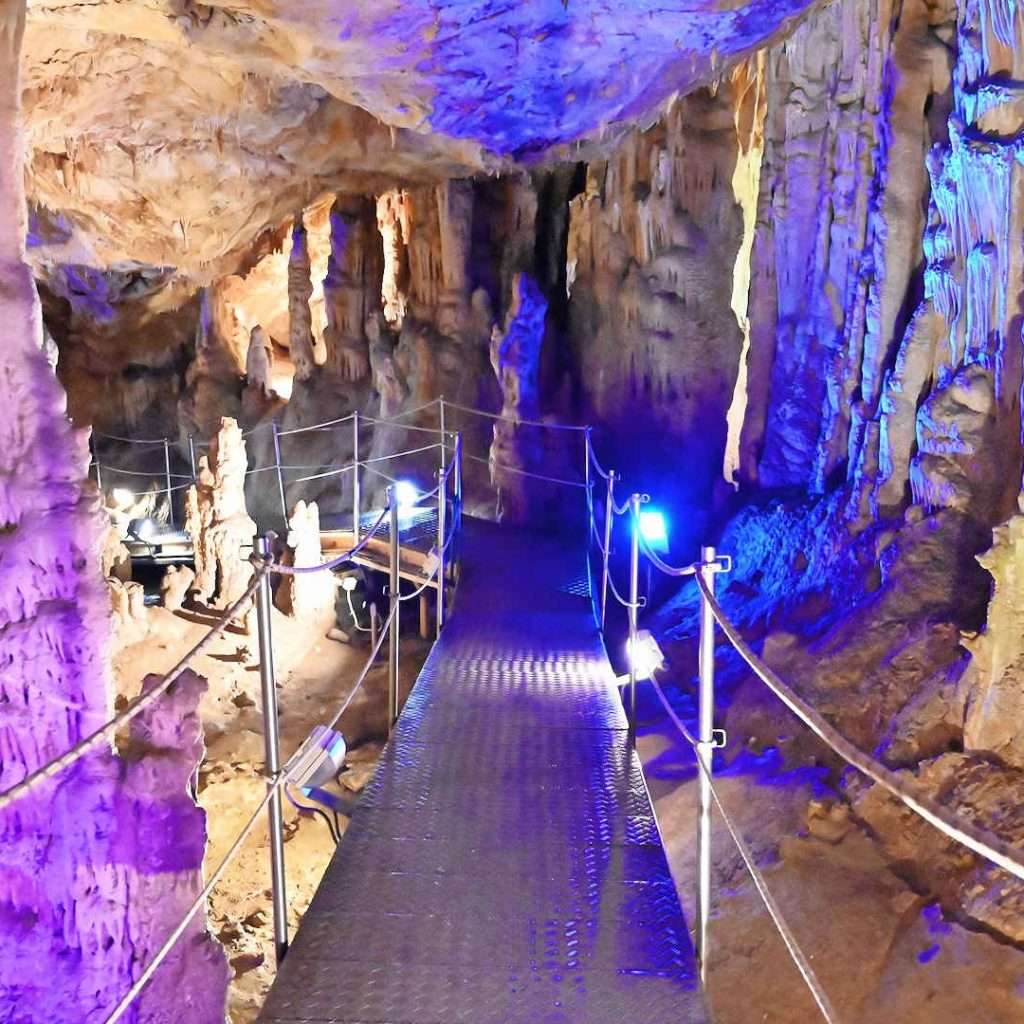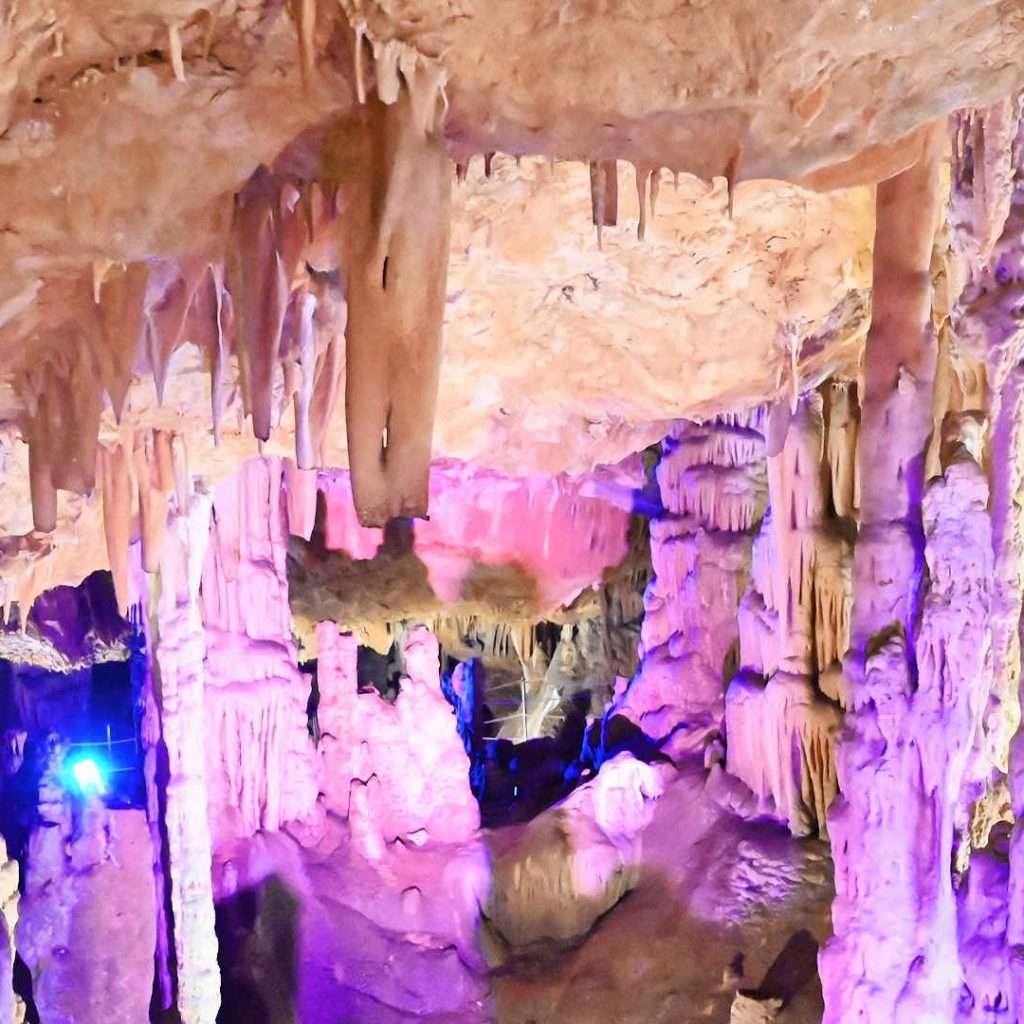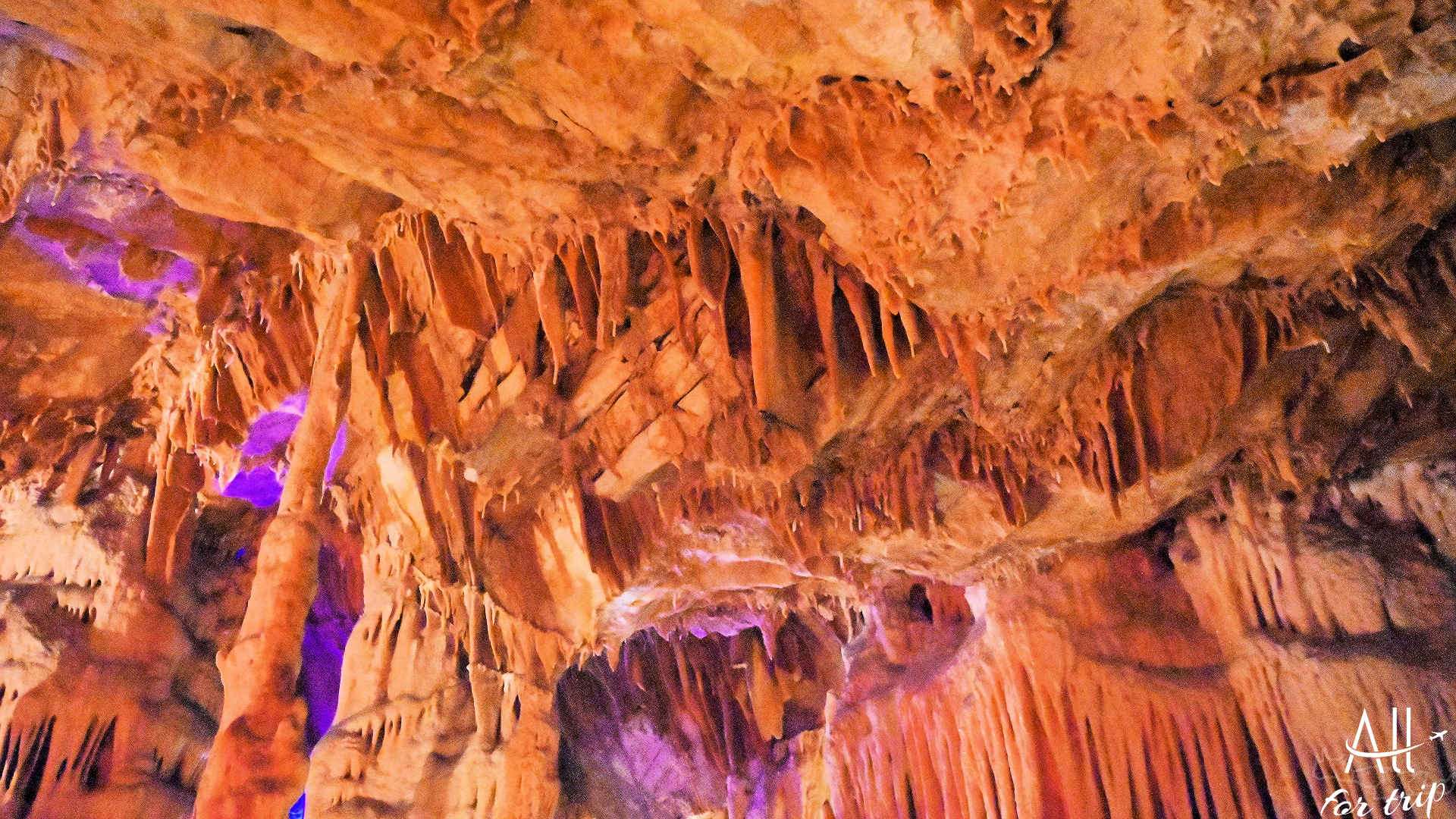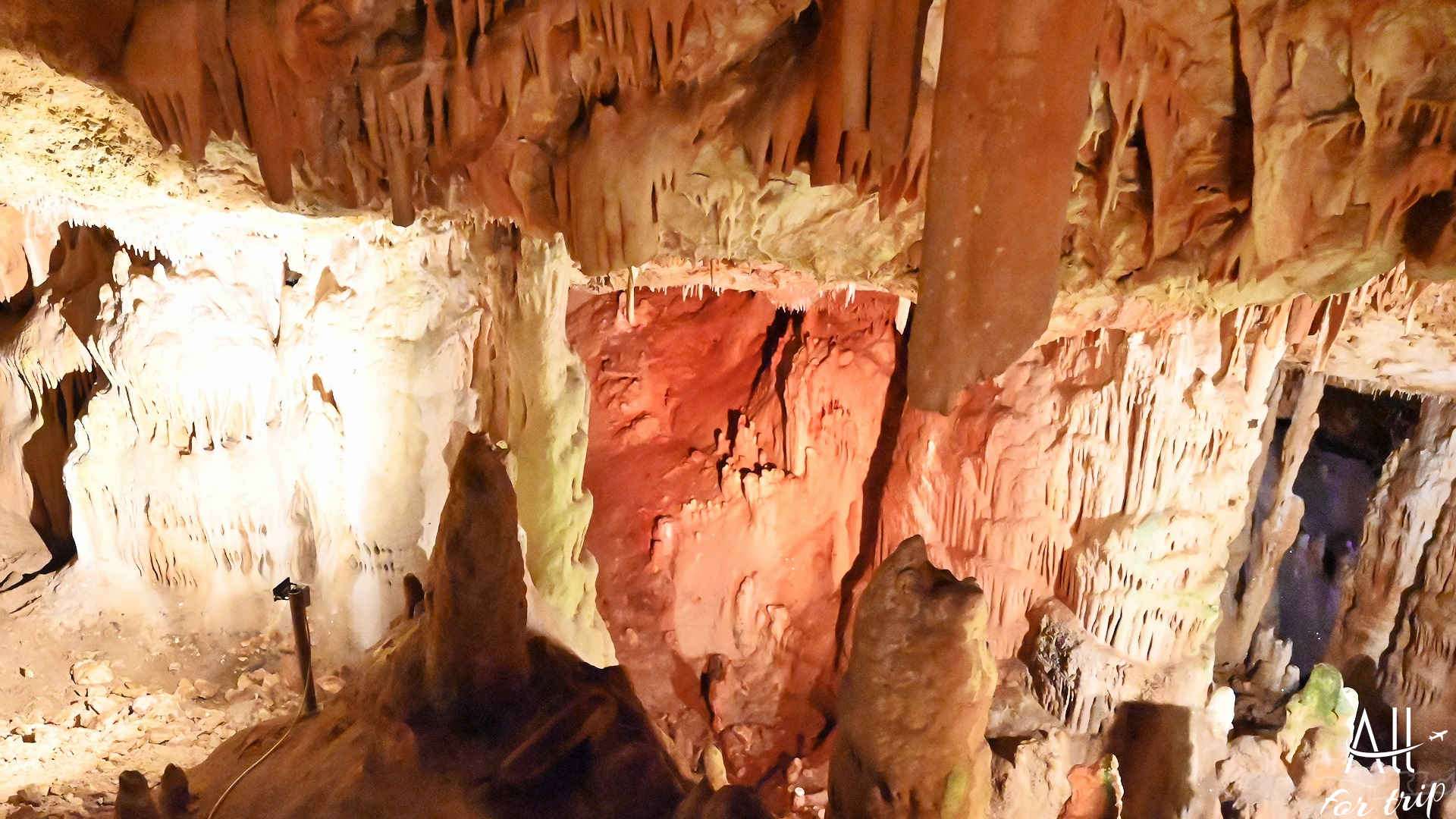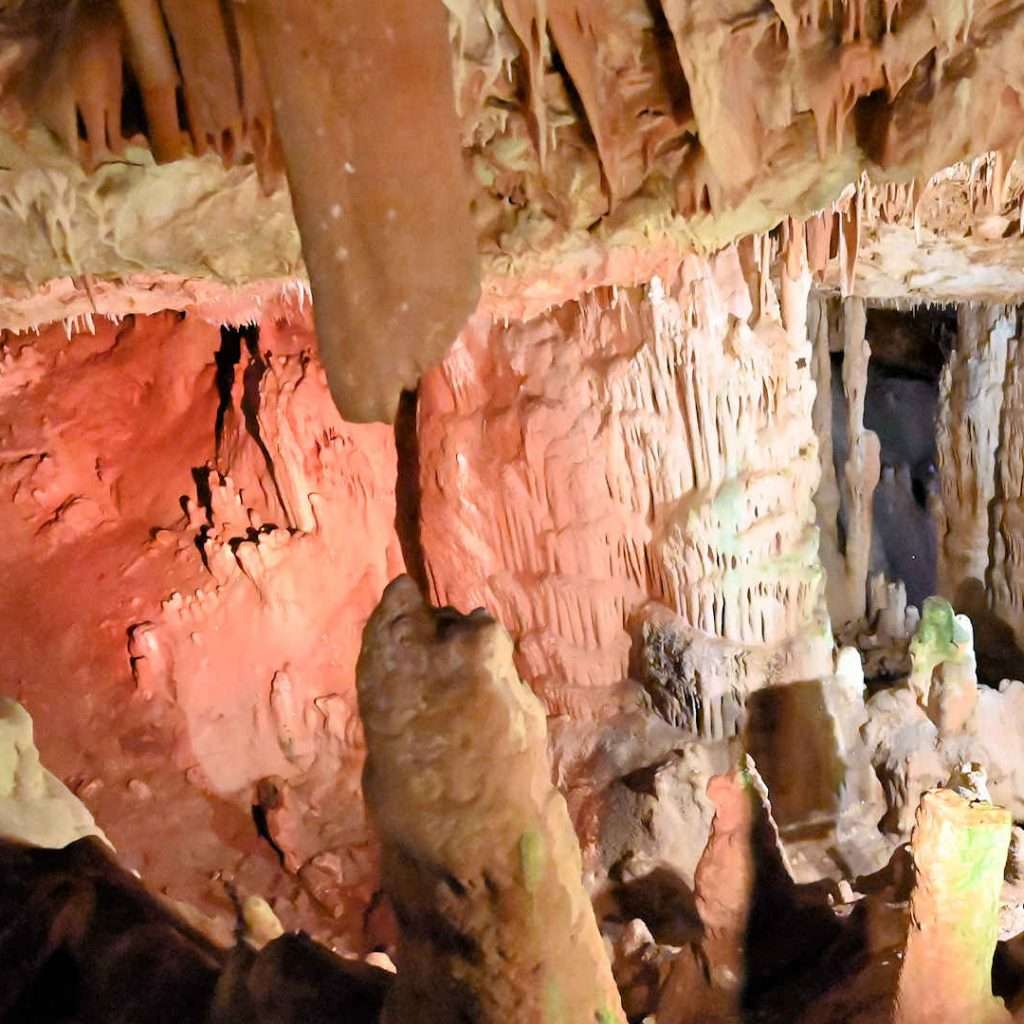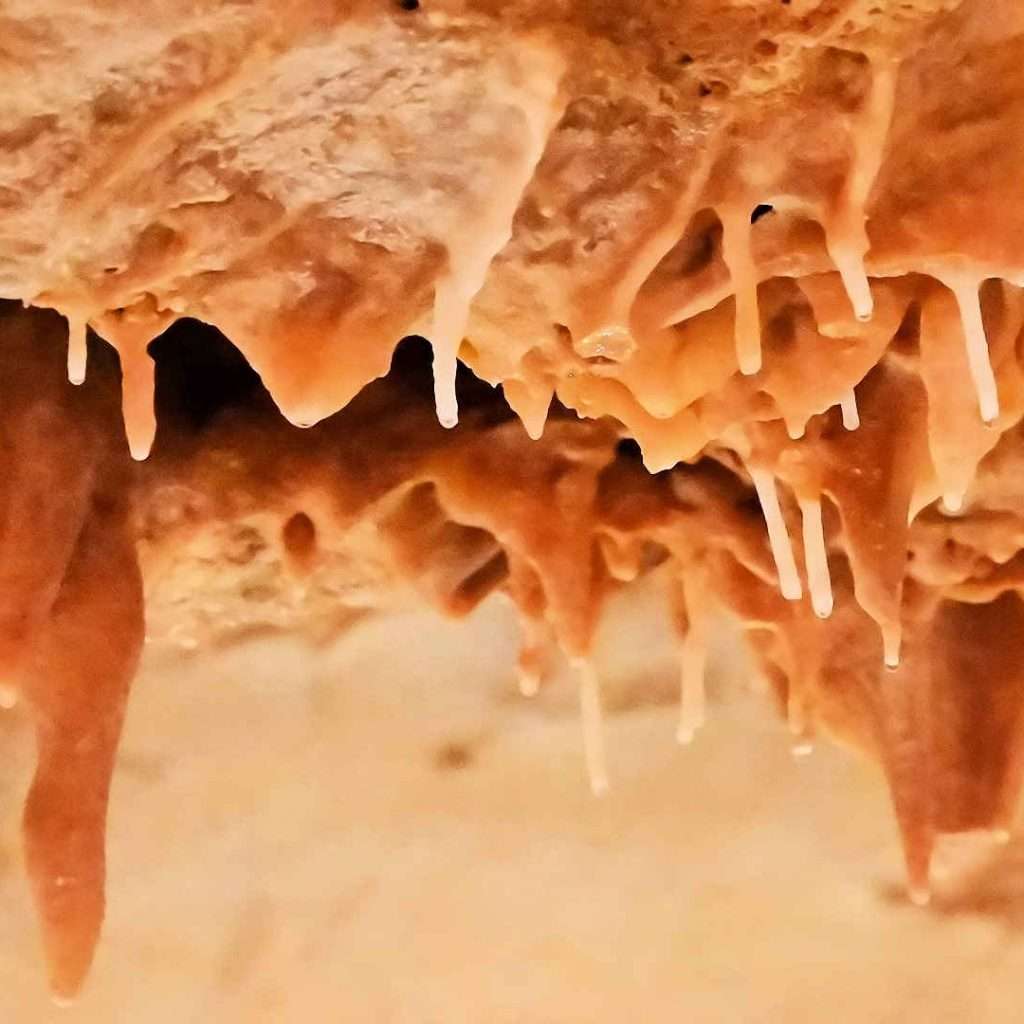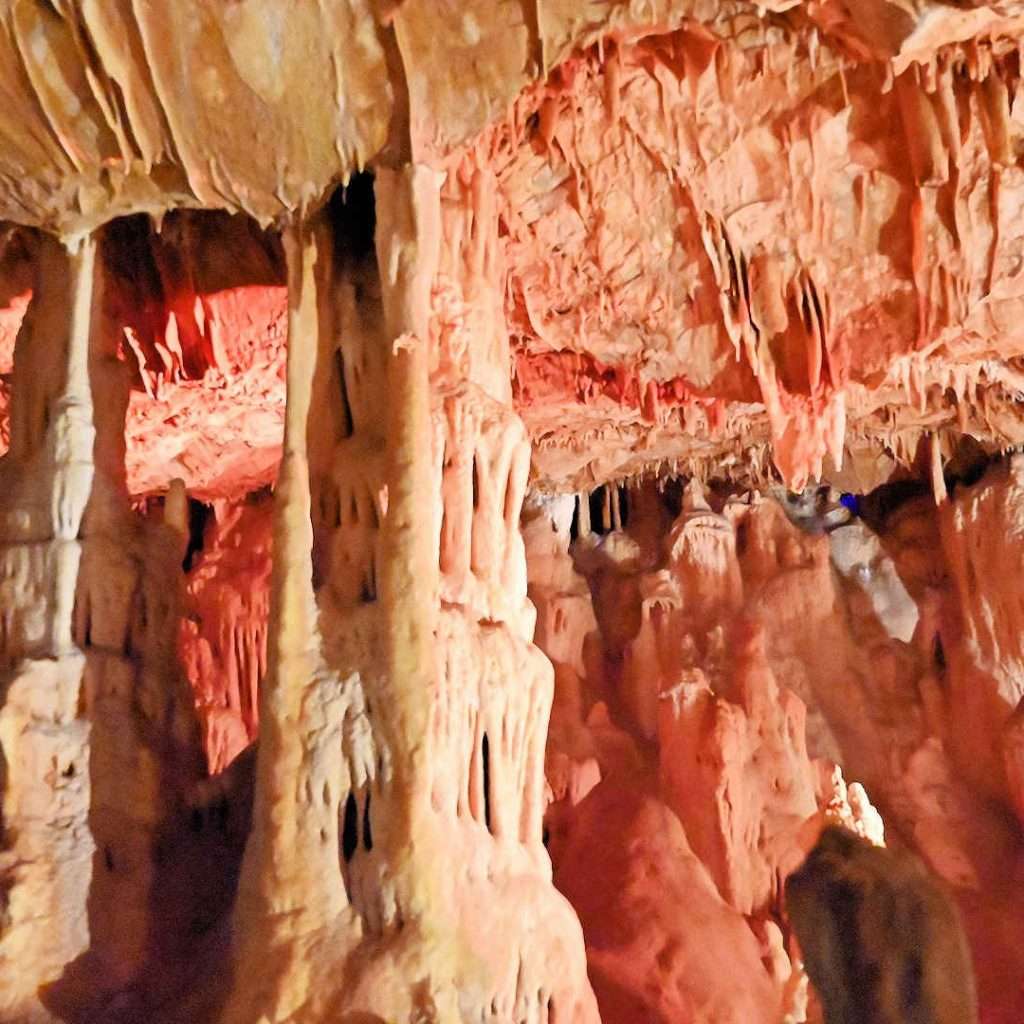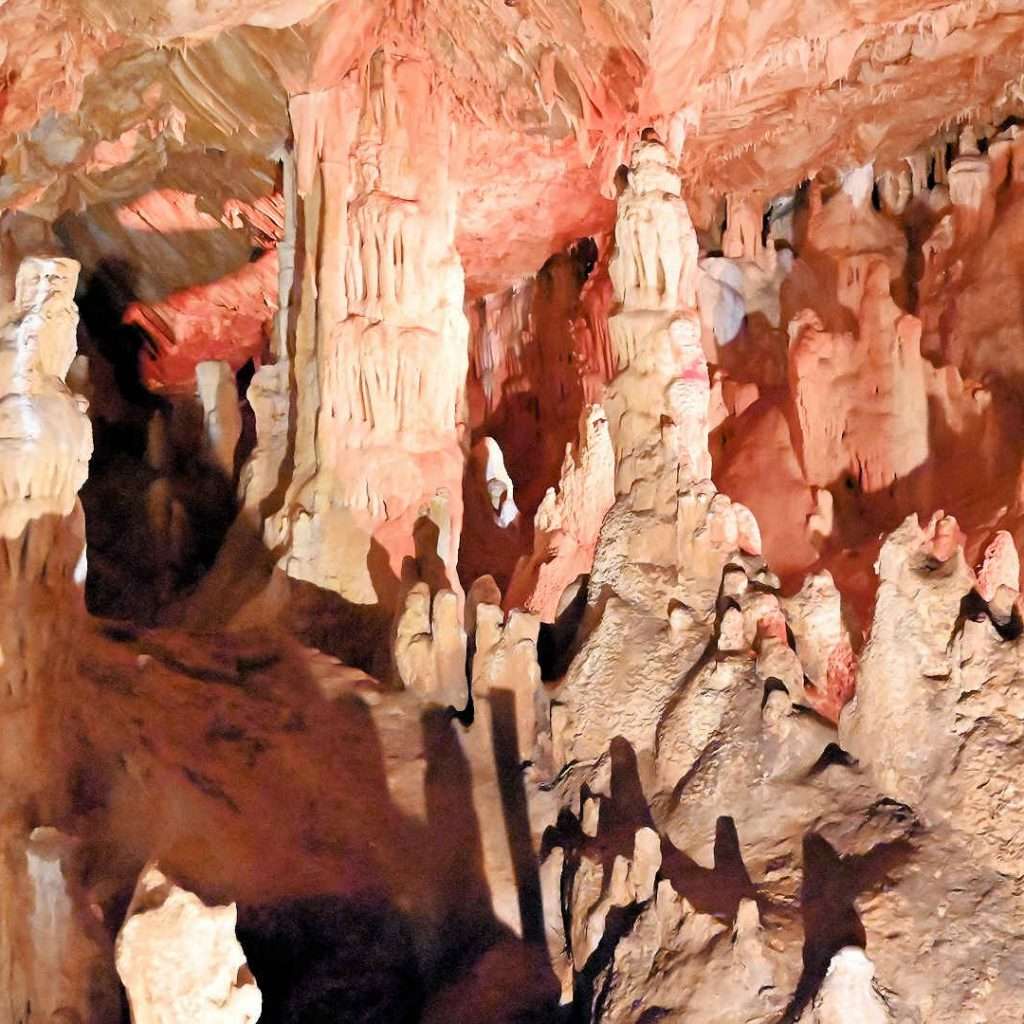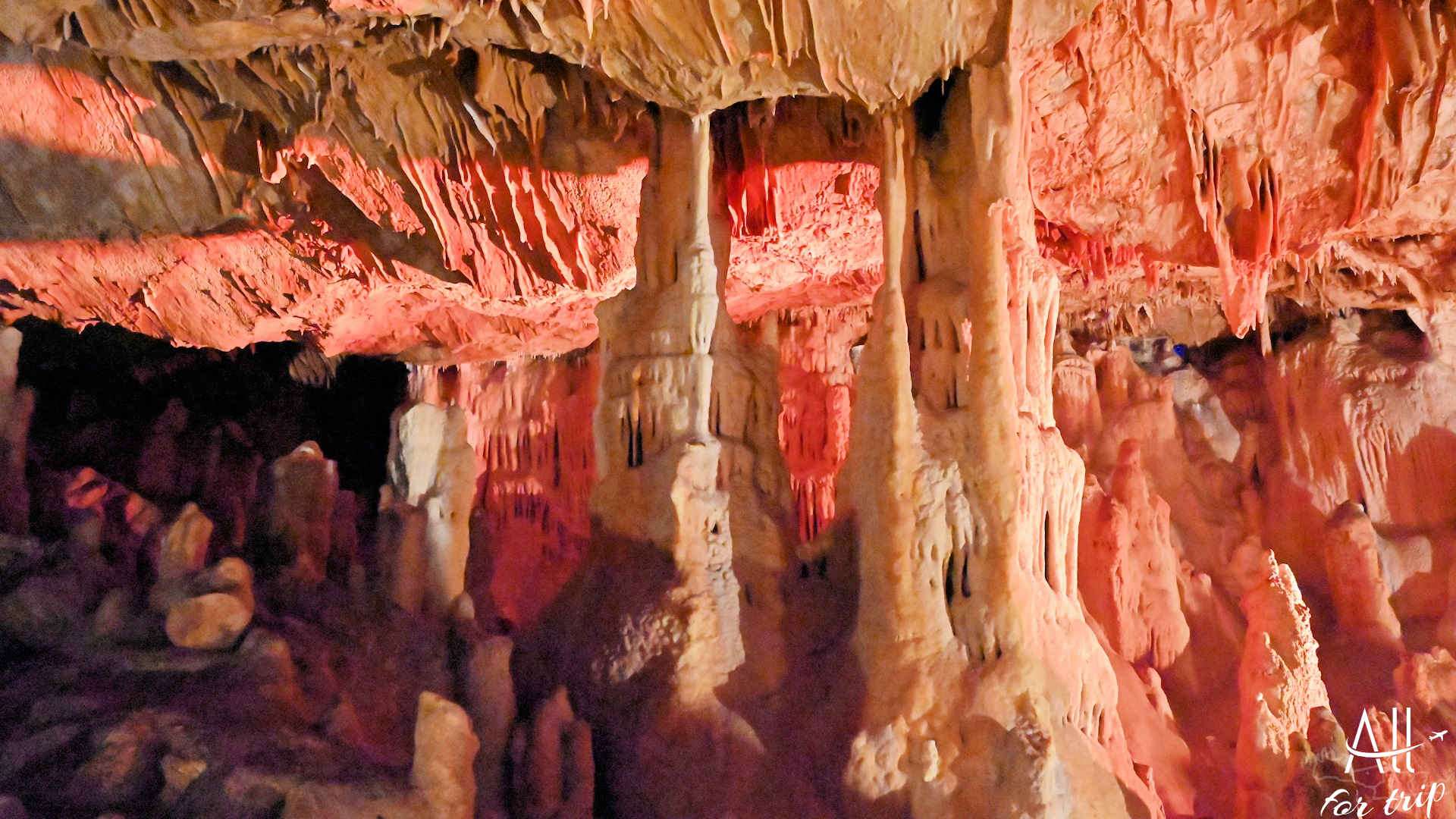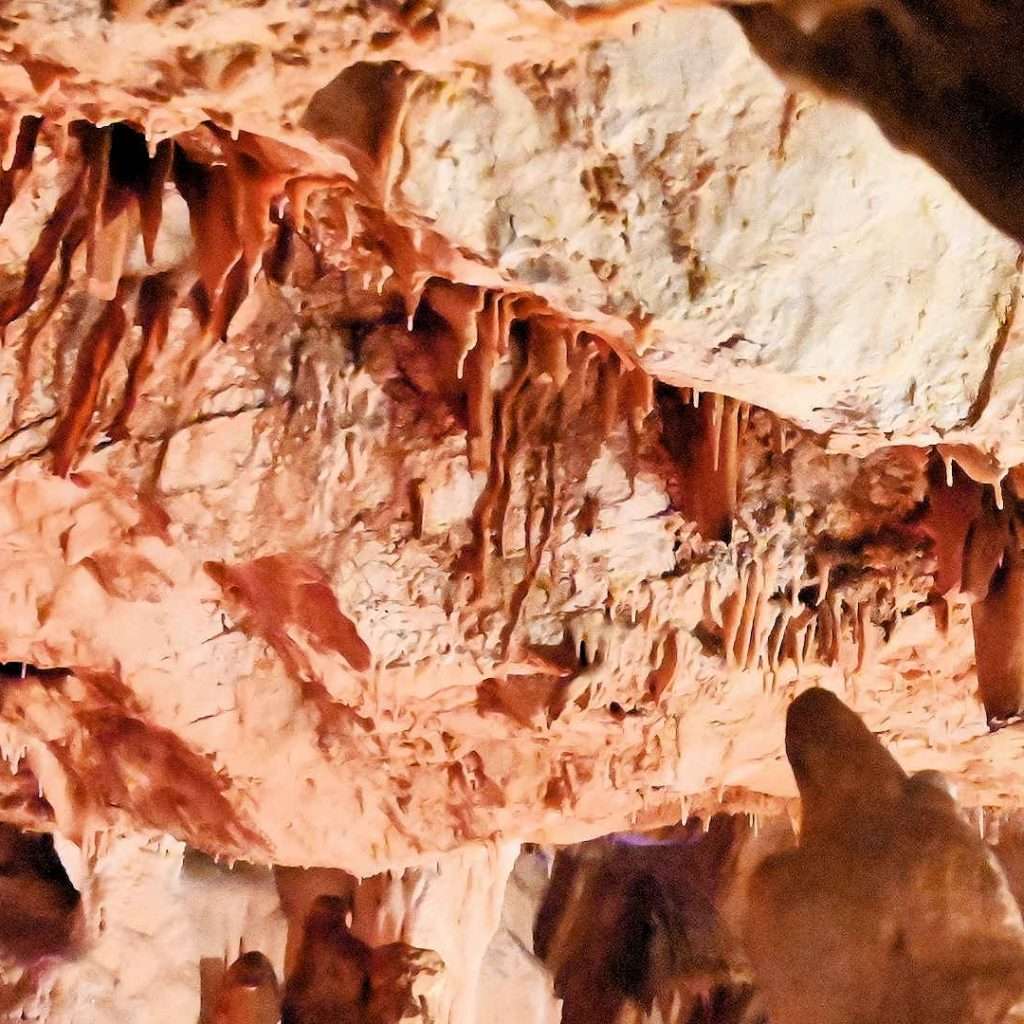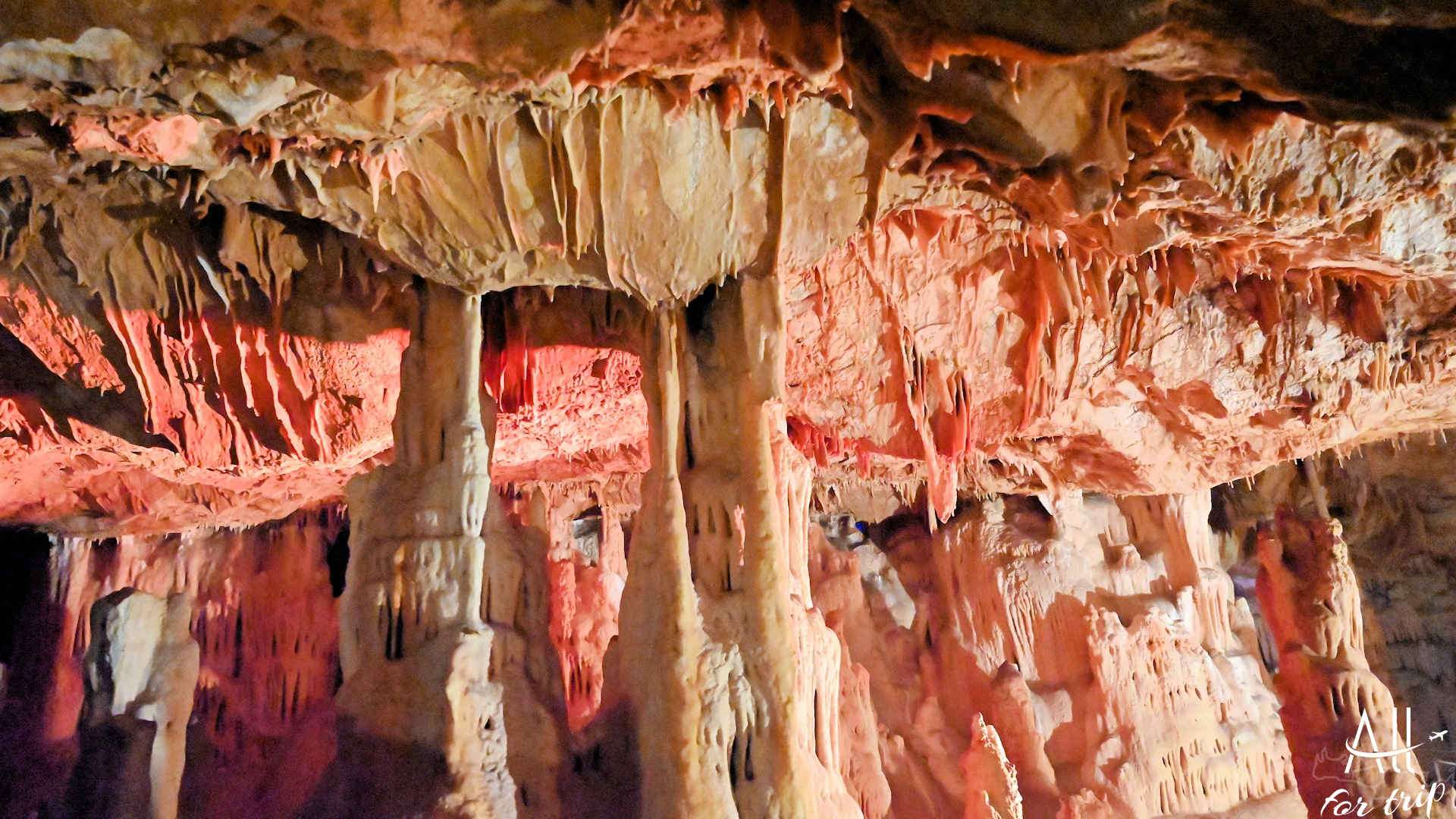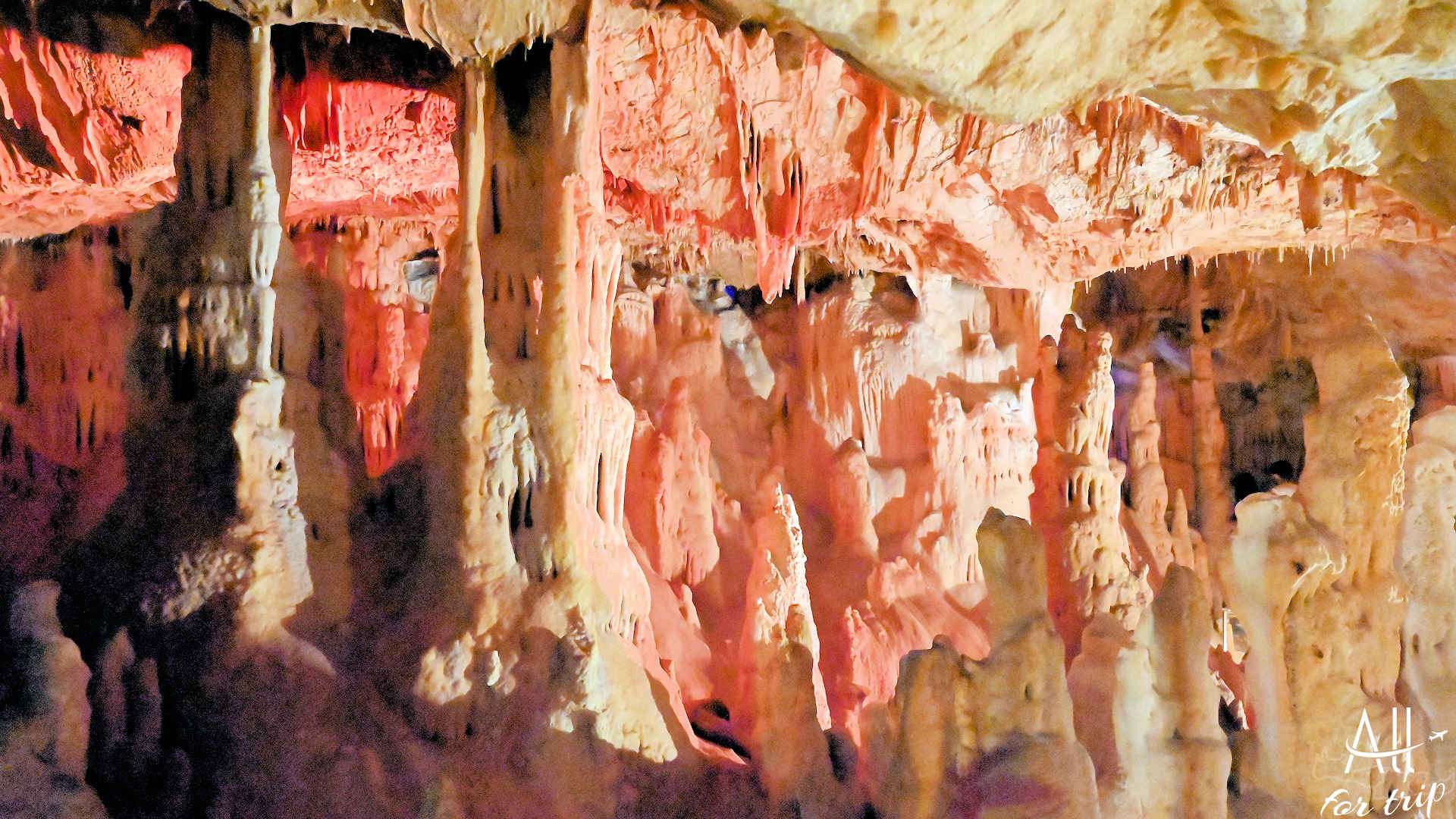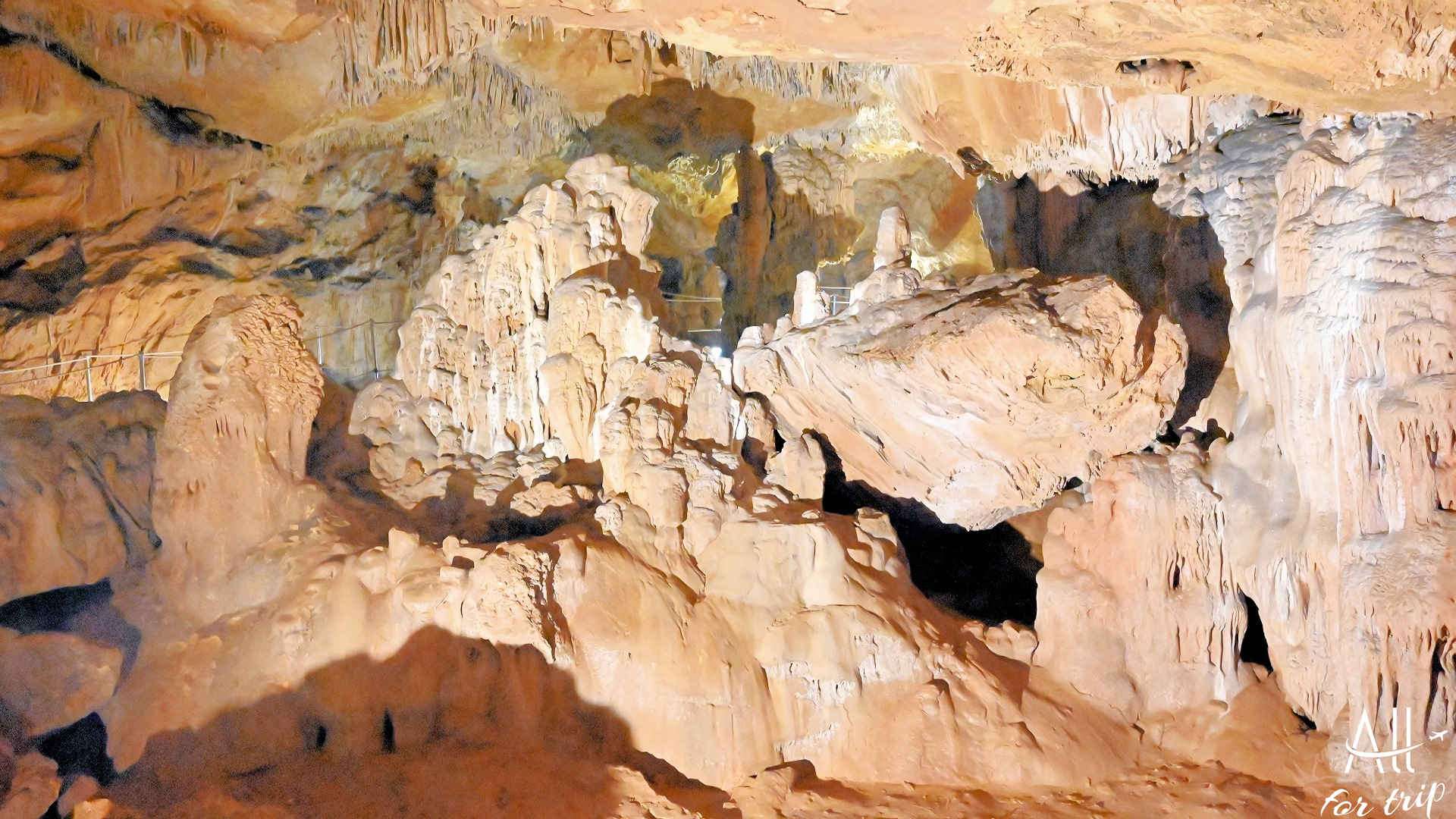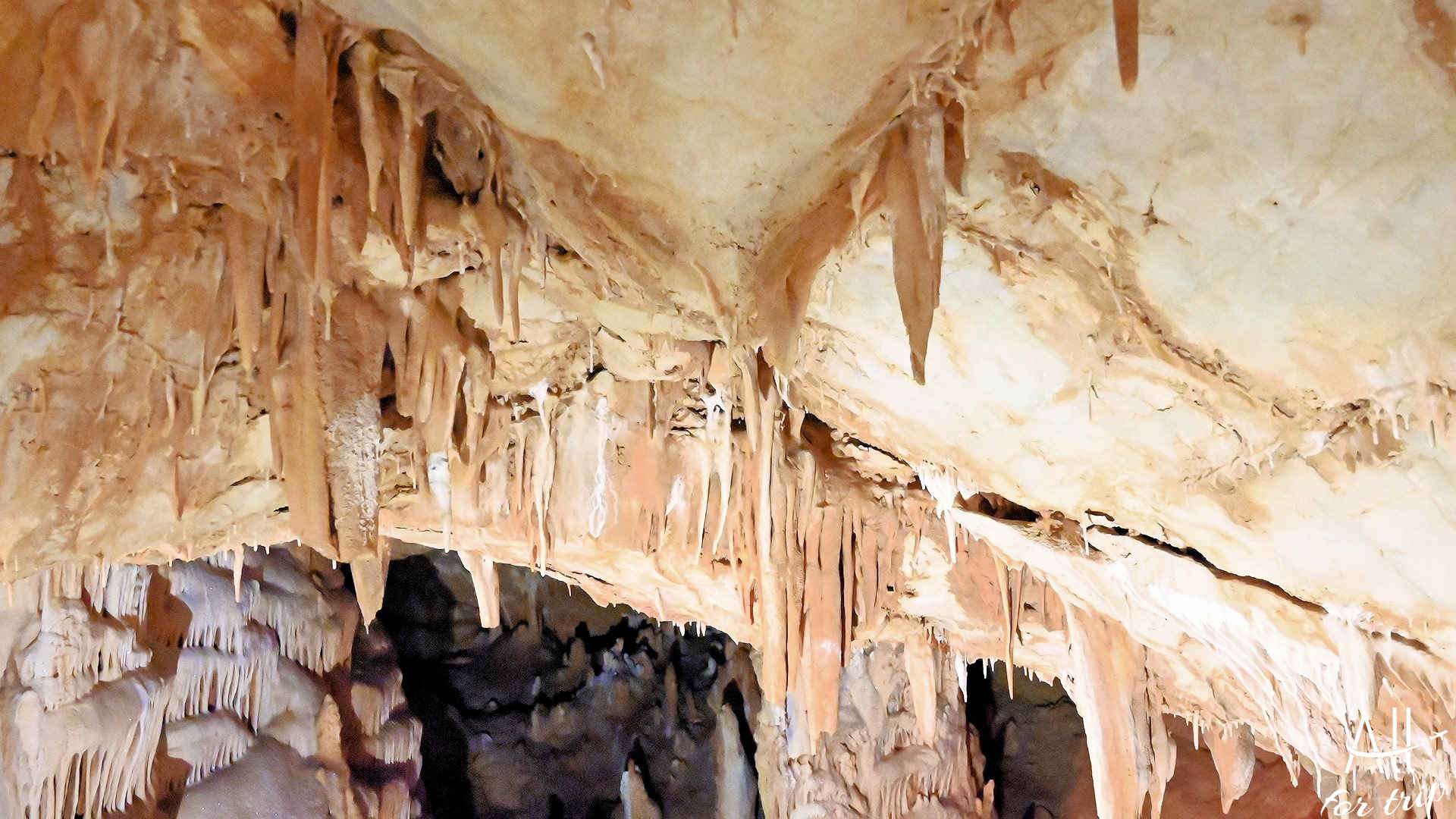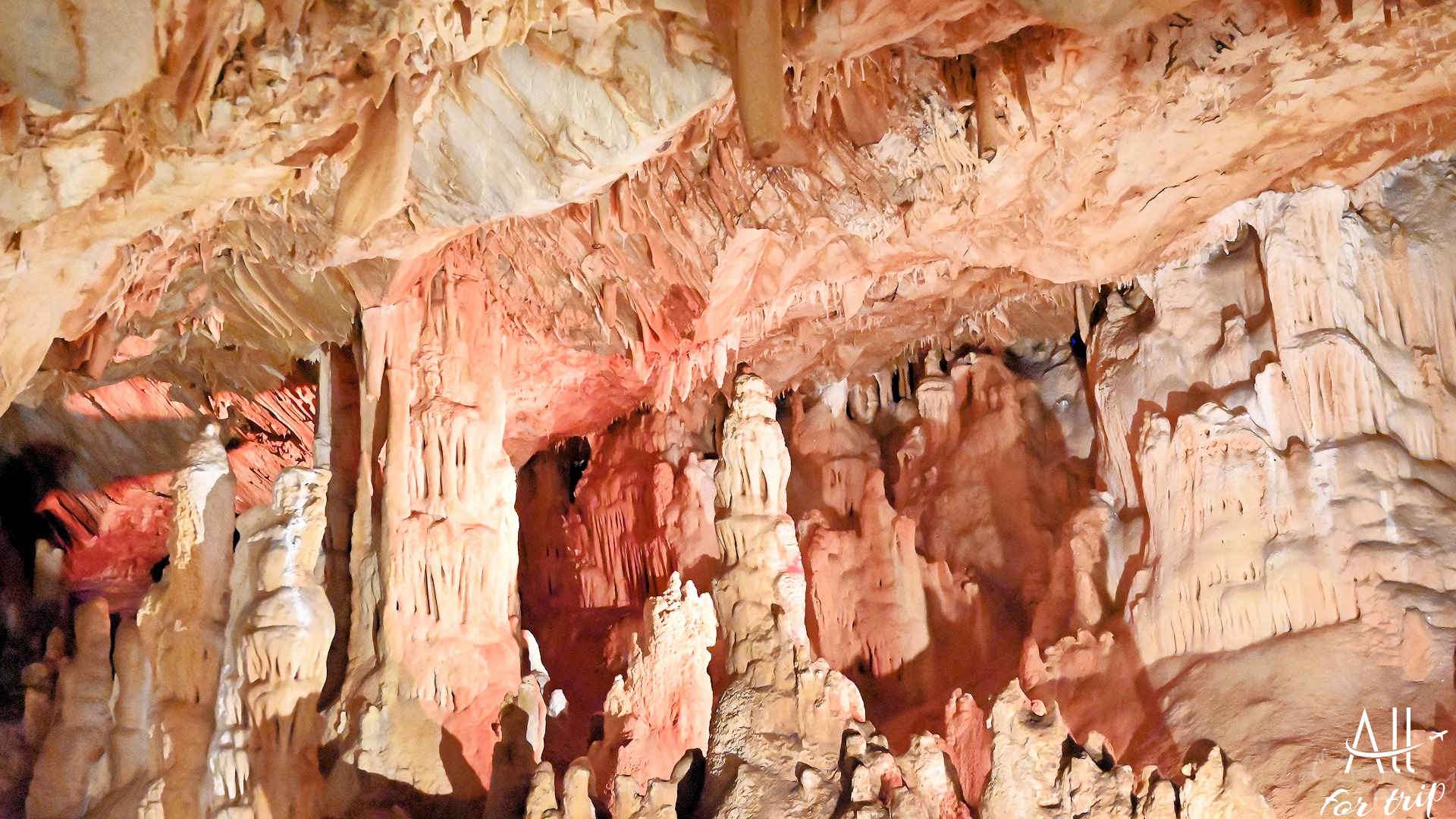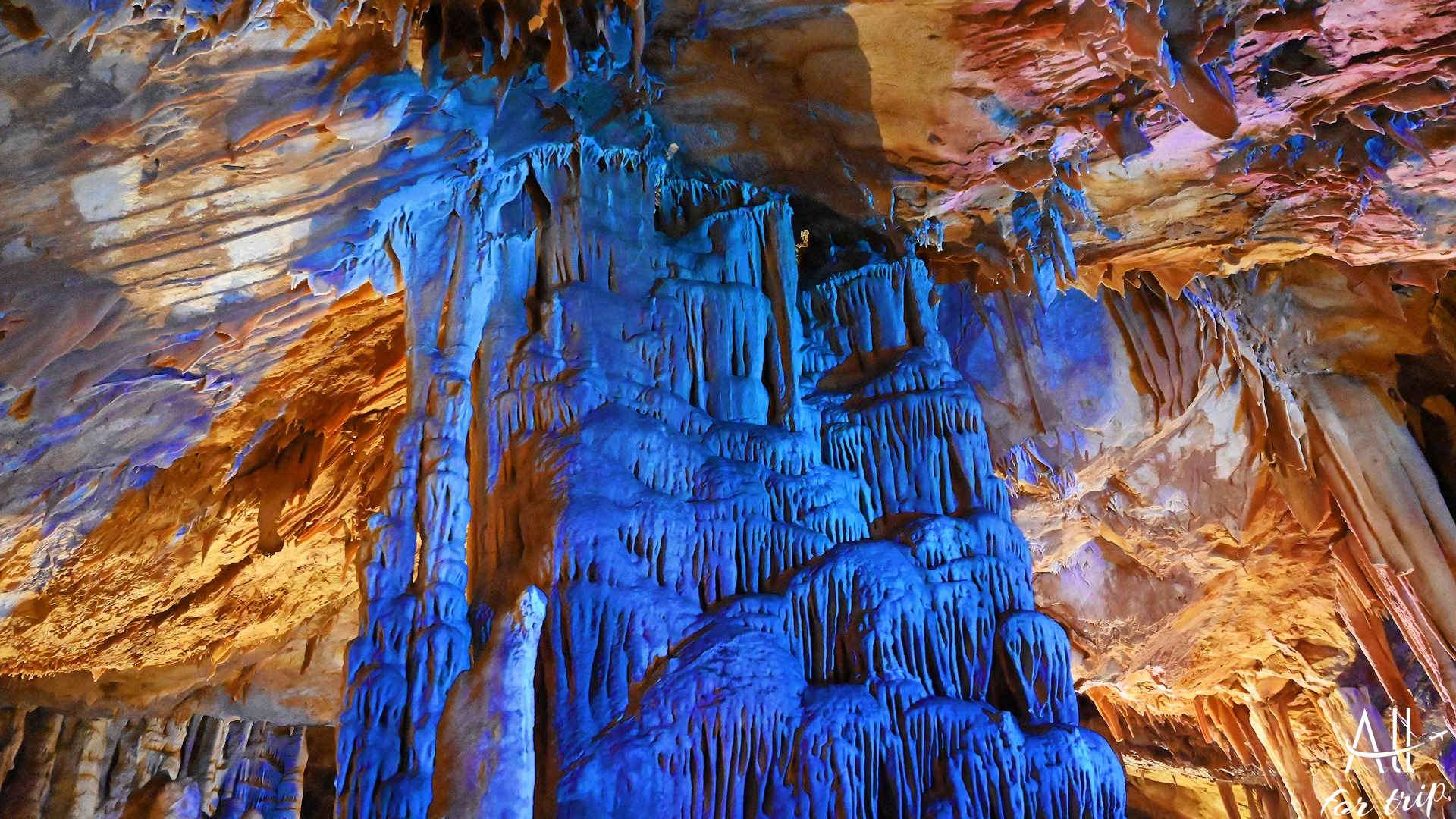
SFENDONI CAVE IN ZONIANA
God loves us! – because He pampers us, with wonderful gifts, such a wonder is part of the Psiloritis Nature Park, protected by UNESCO: the Zoniana cave!
This is a must-see for all lovely people visiting Crete, because we encounter a unique combination of nature’s creation and human ingenuity: the stalactites illuminated, with coloured lights guide us into a fabulous world. The colourful stalactites surround us, like a wonderful melody.
GPS is very important! – because there are no street names in Western Crete. GPS: 35.298292, 24.838716
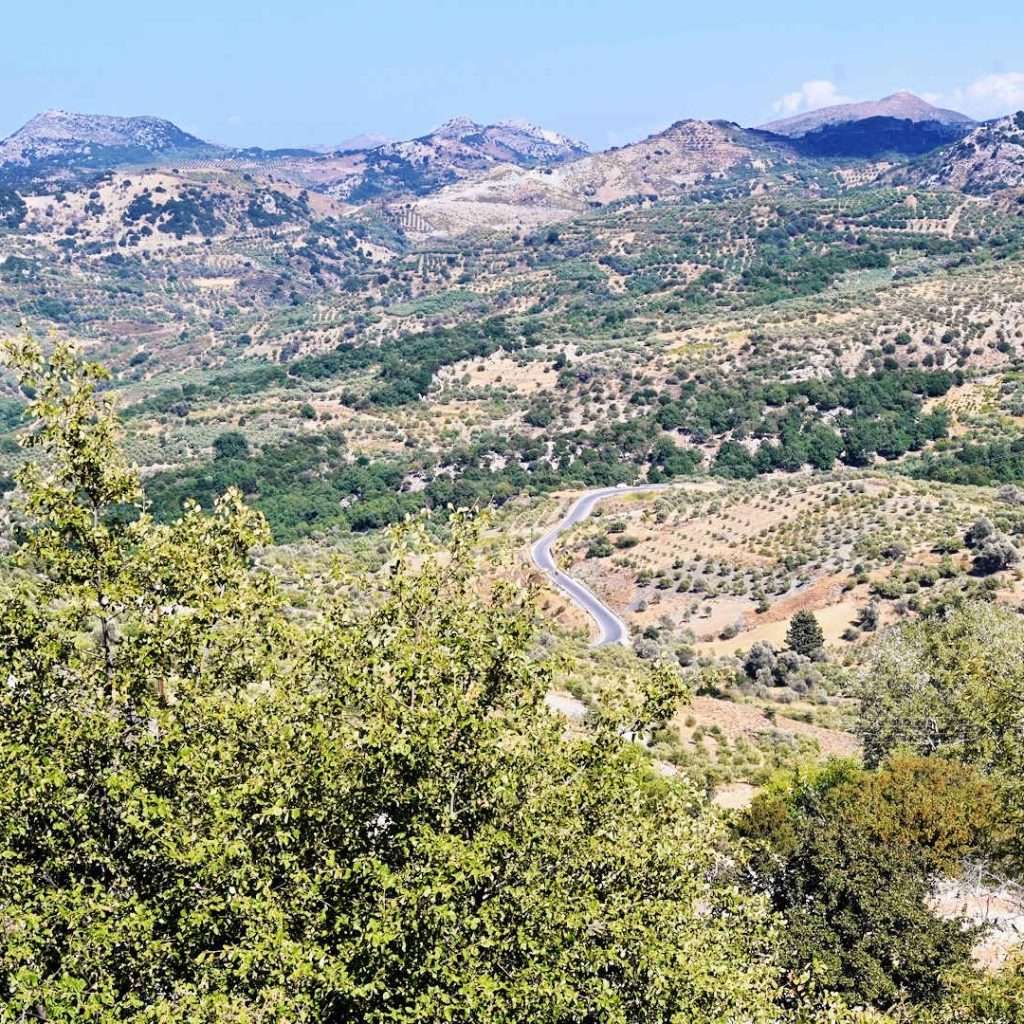
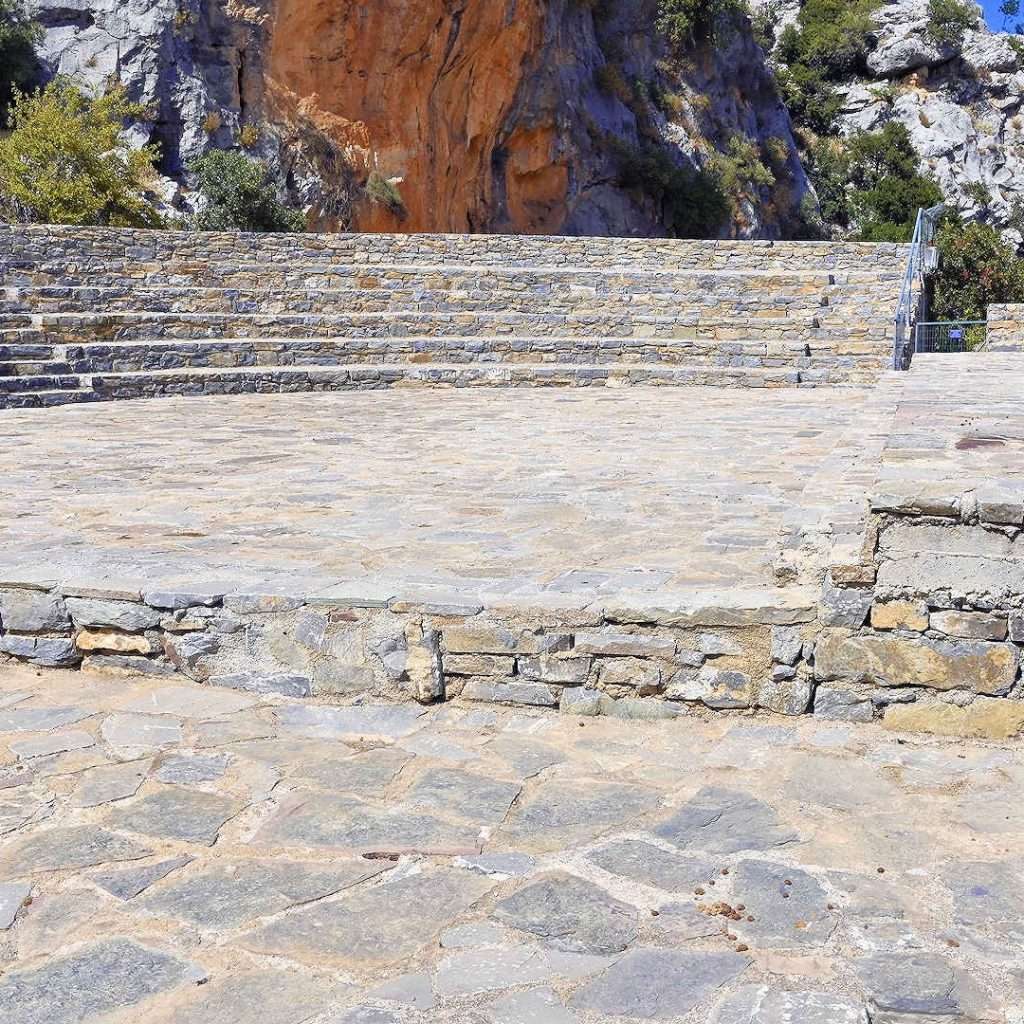
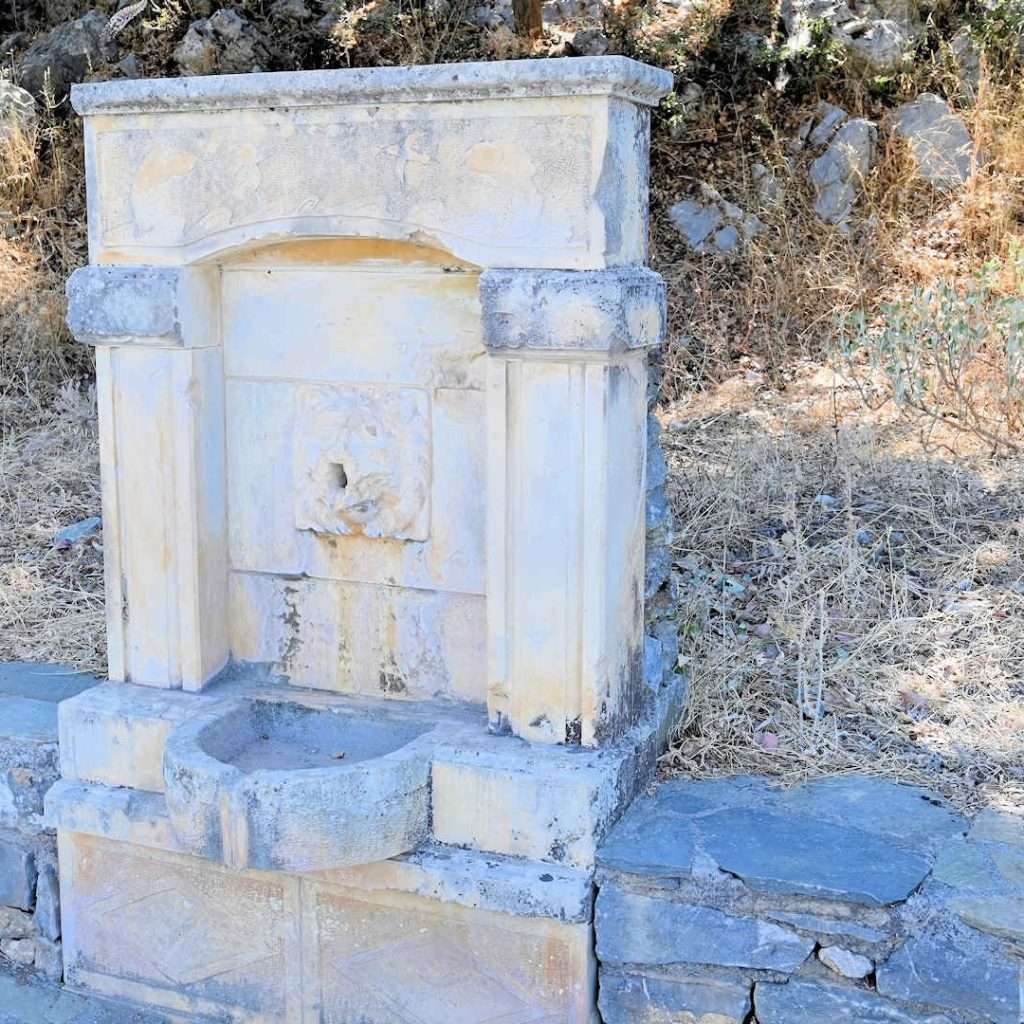
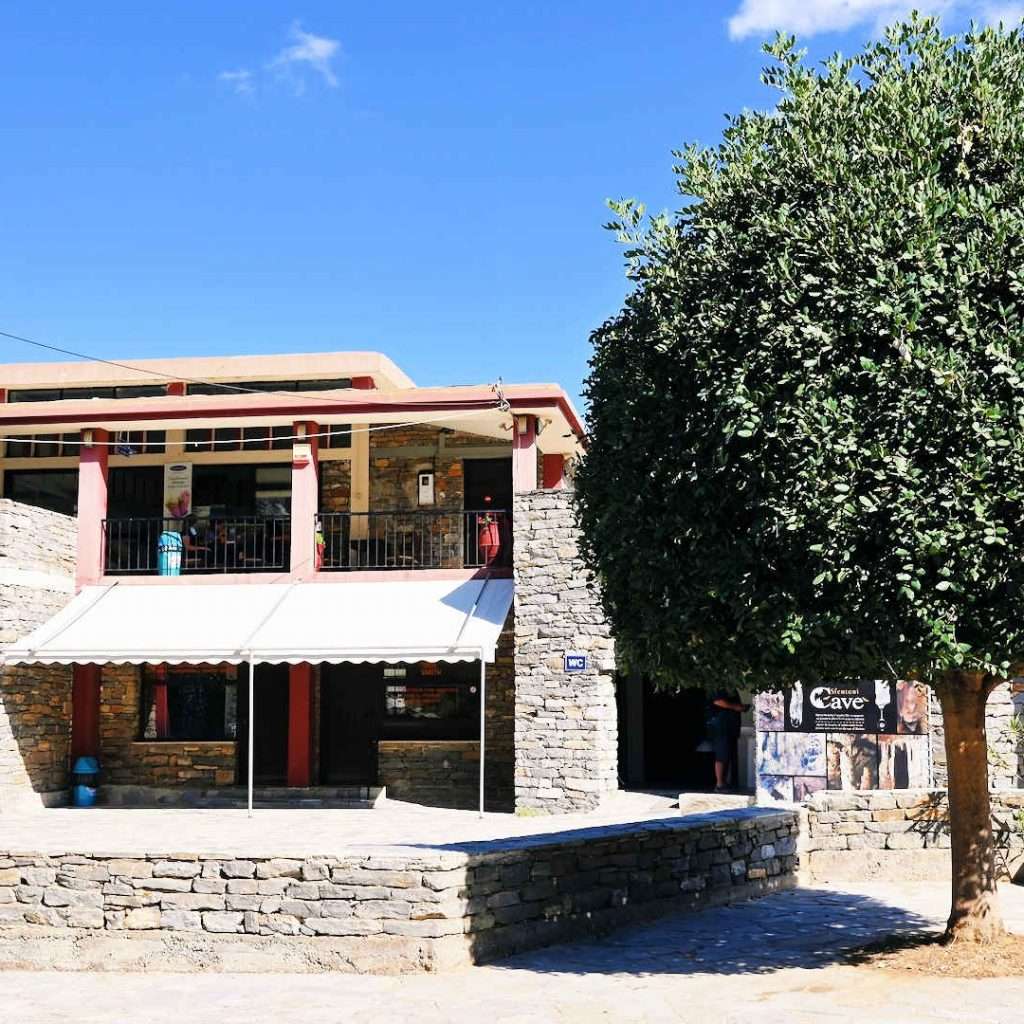
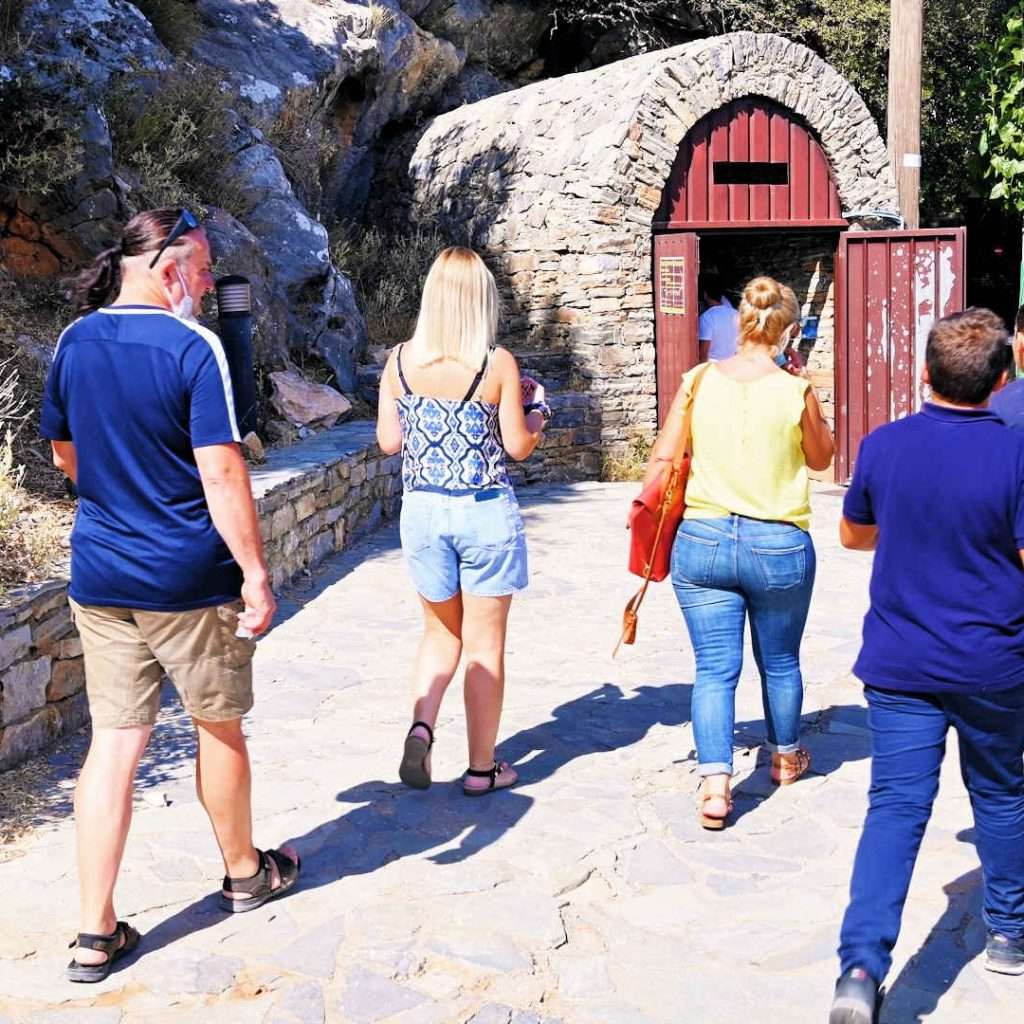
Passing the Holy Cross Church, which is only 280 meters, the village of Zoniana is 1.5 km. Rethymno 49.8 km, Chania 111 km, Heraklion 45.4 km. On the slope of Mount Halepa, at an altitude of 630 meters, there is an amphitheatre in front of the entrance to the cave, as well as a cafe: where You can refresh yourself while waiting for the tour guide.
OPENING HOURS:
Summer period: April 15 – October 30
Every day: 10:00 – 17:00
Winter period: 1. November – April 14
ONLY Sunday: 10:00 – 14:30
TICKET PRICE: ADULT:
€6, CHILDREN: €4, GROUP TICKET: €5
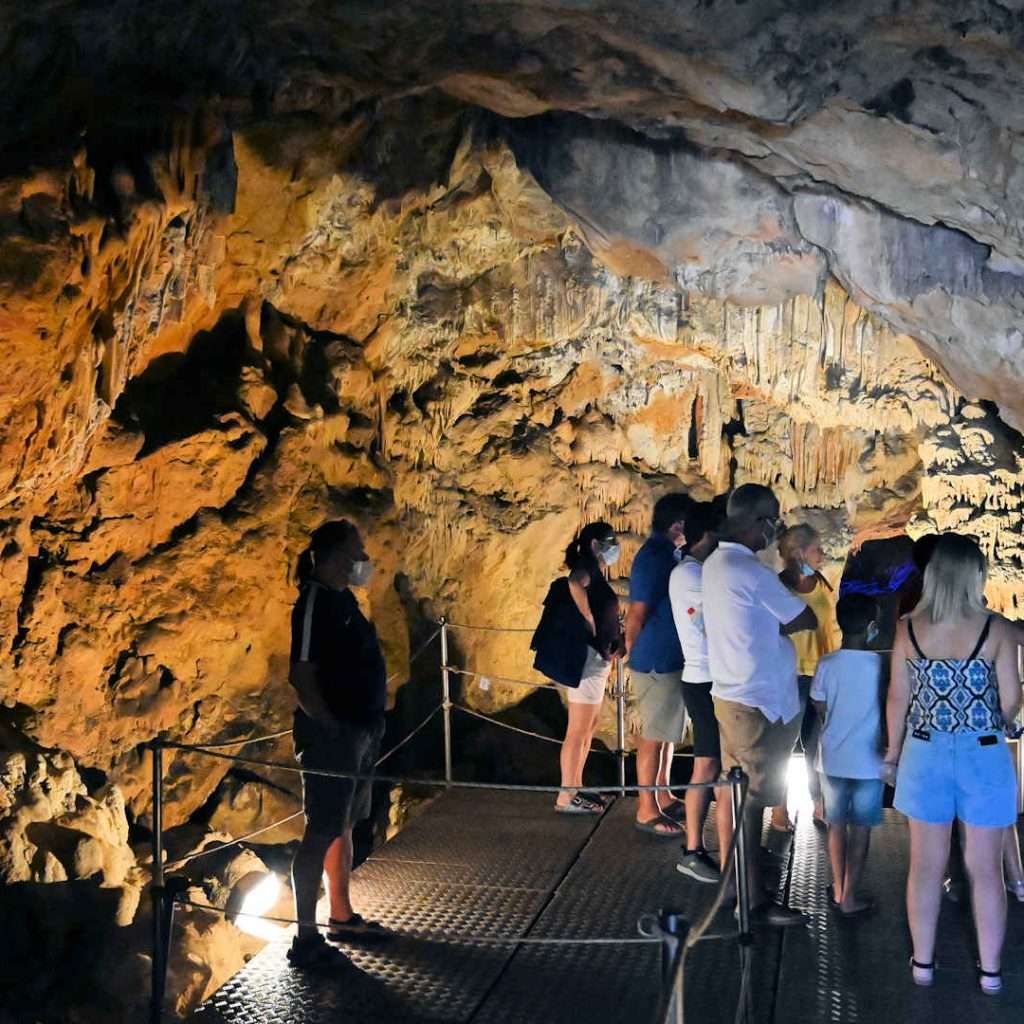
The cave can only be visited with a cave guide! – the visit with an English-speaking guide starts every hour and lasts approx. 40 minutes.
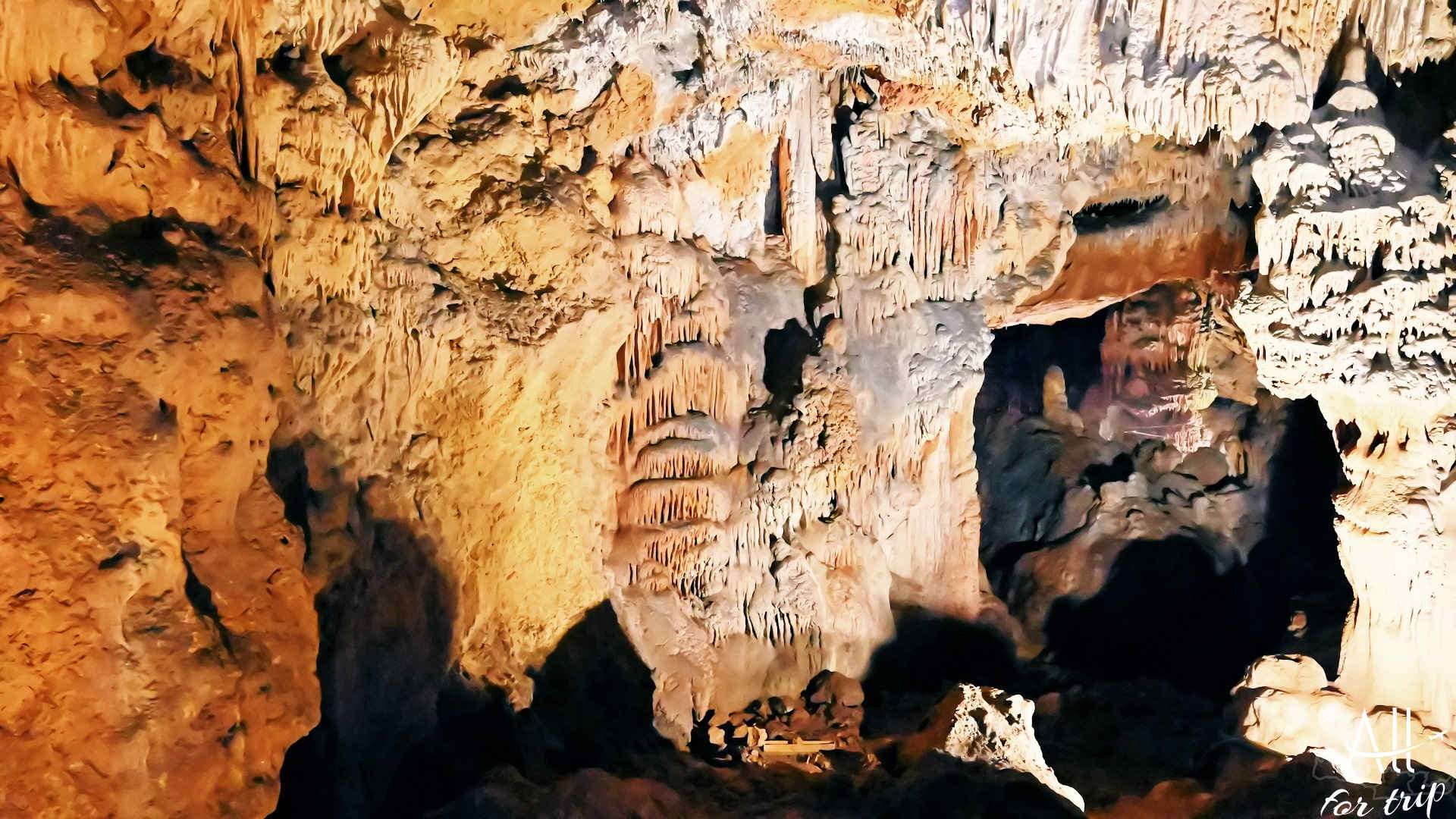
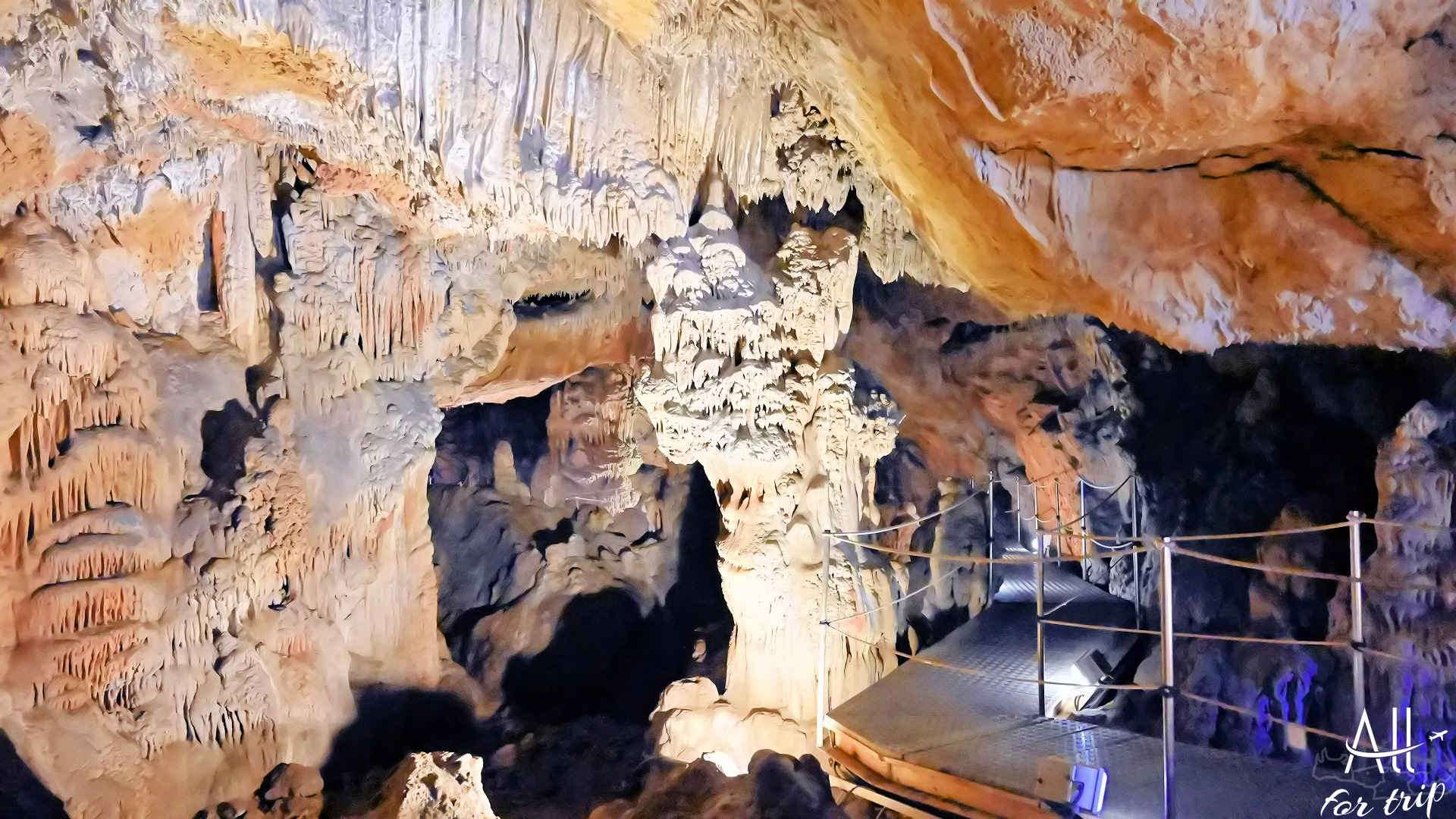
GOOD NEWS: the cave is also accessible for people with disabilities!
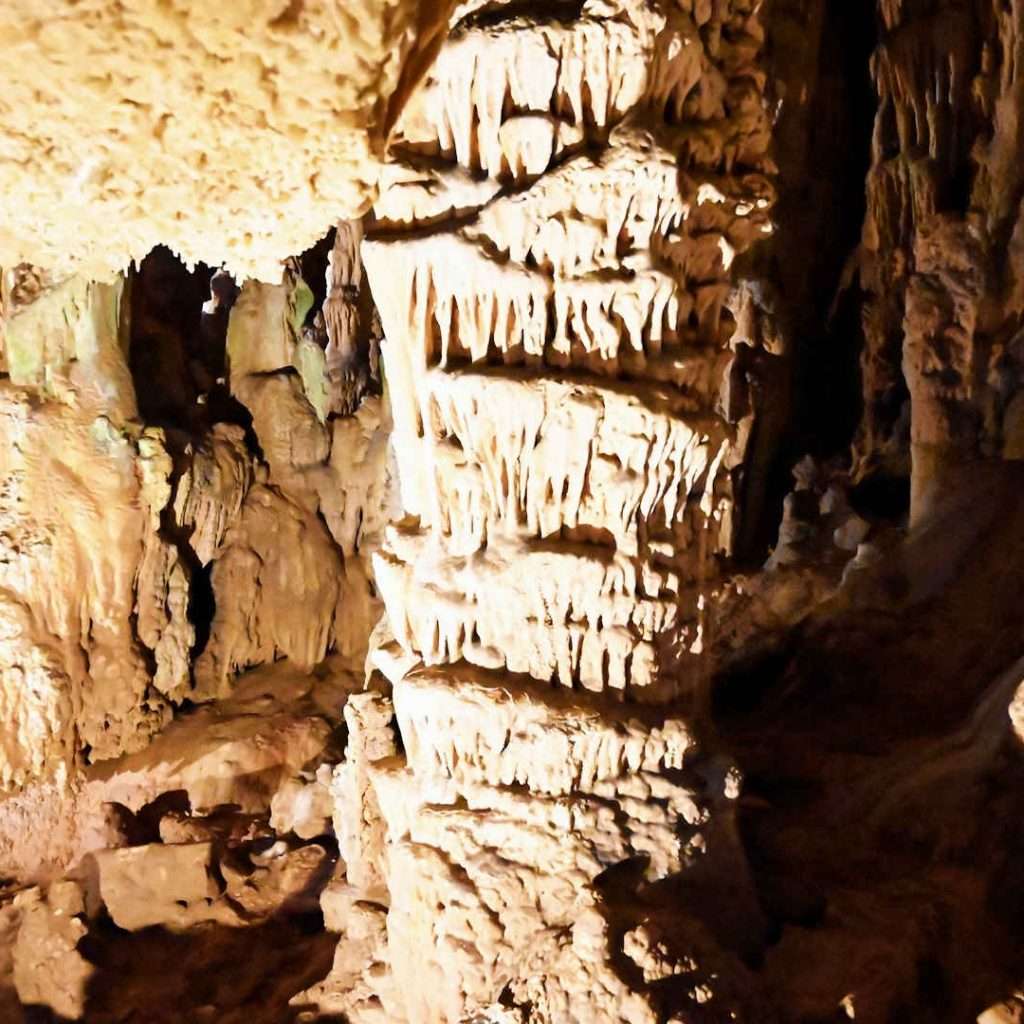
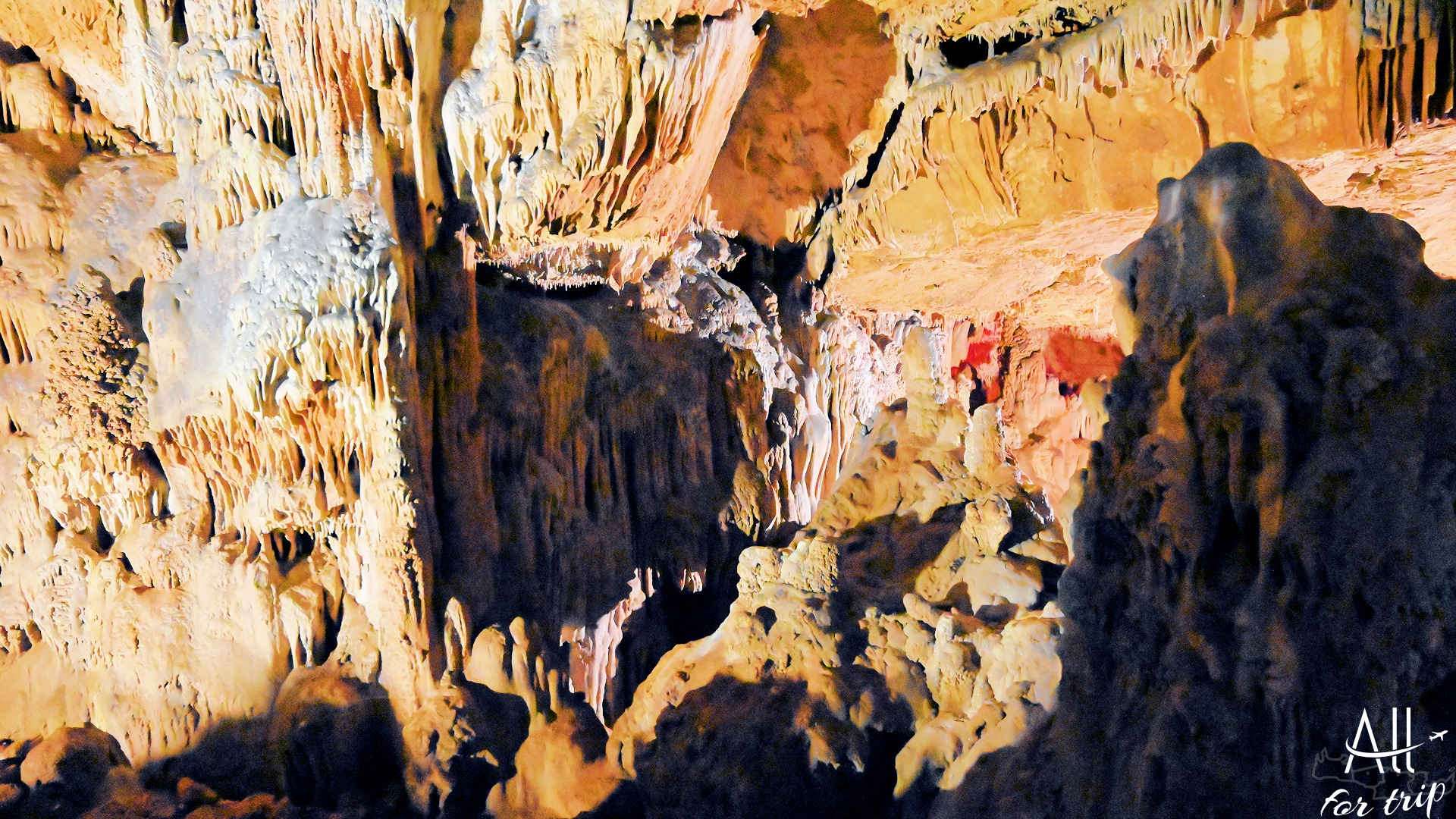
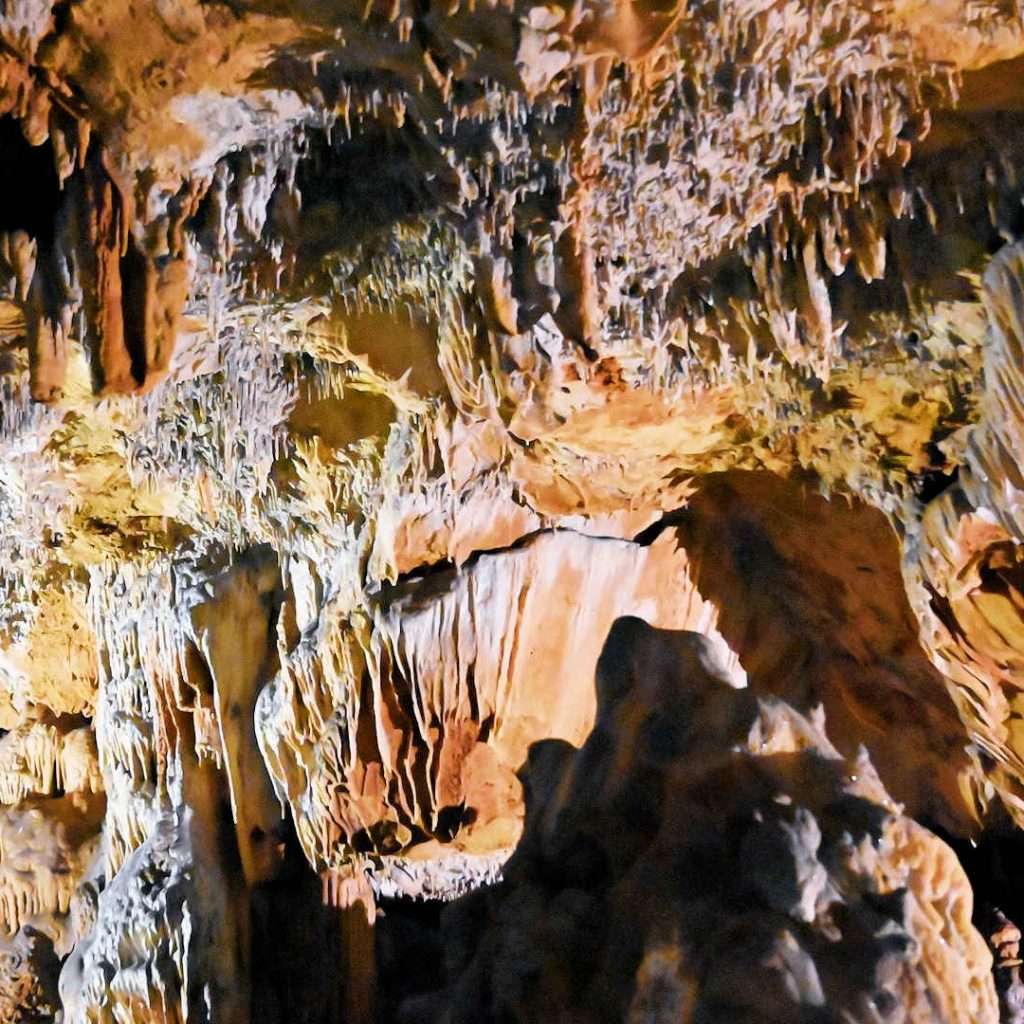
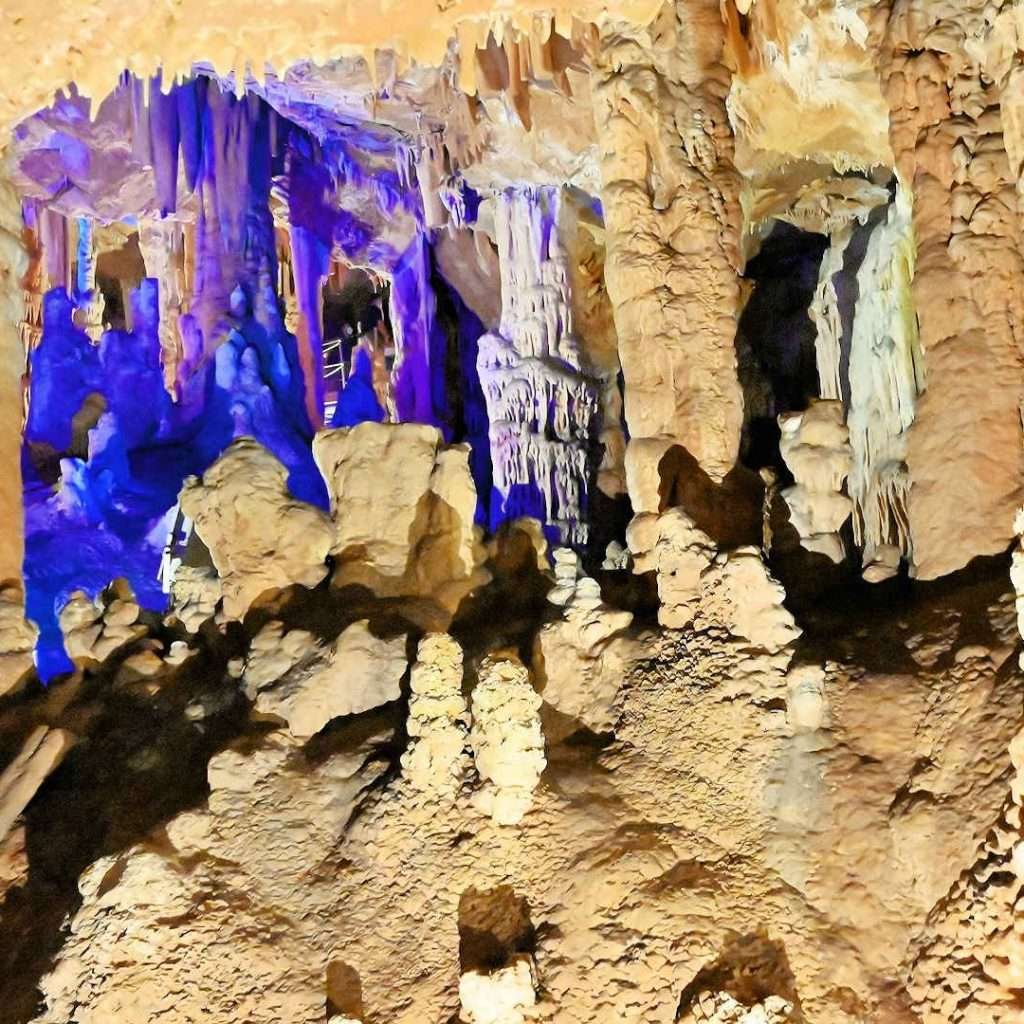
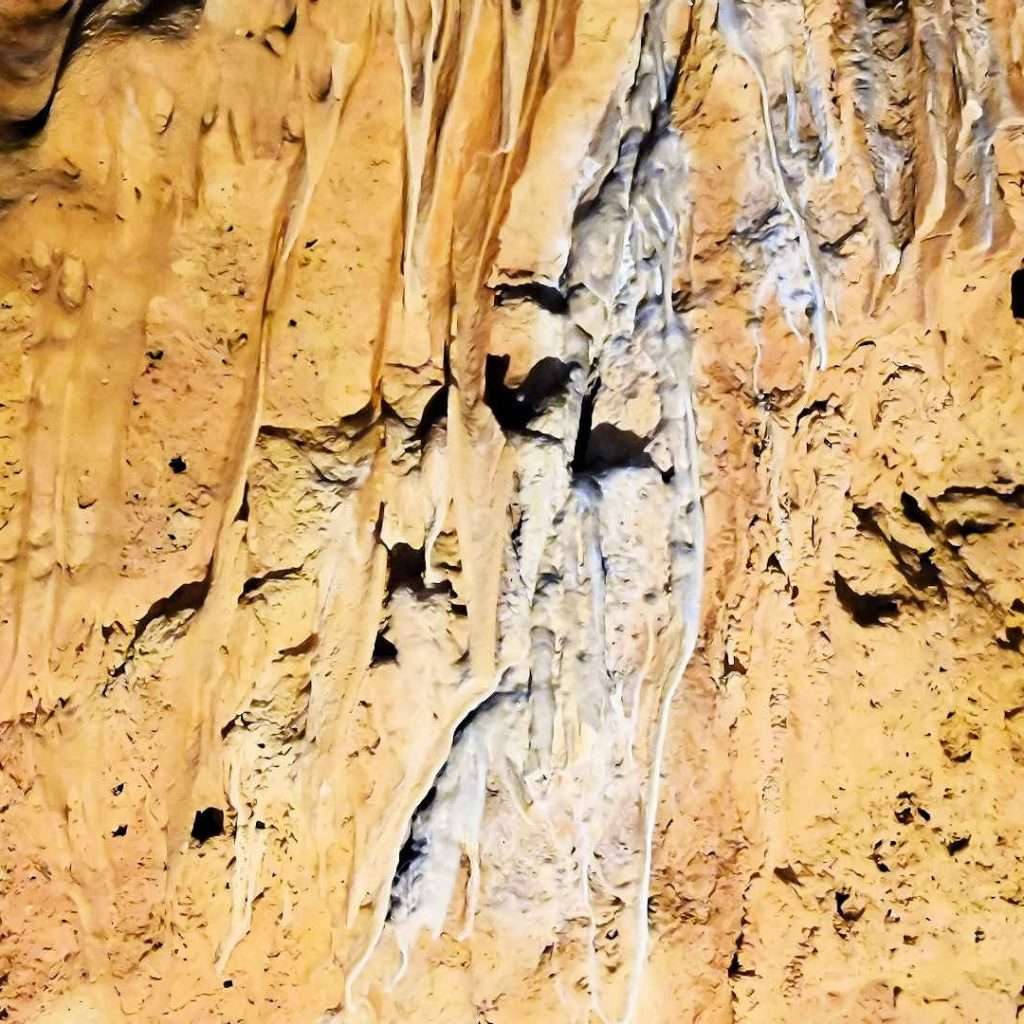
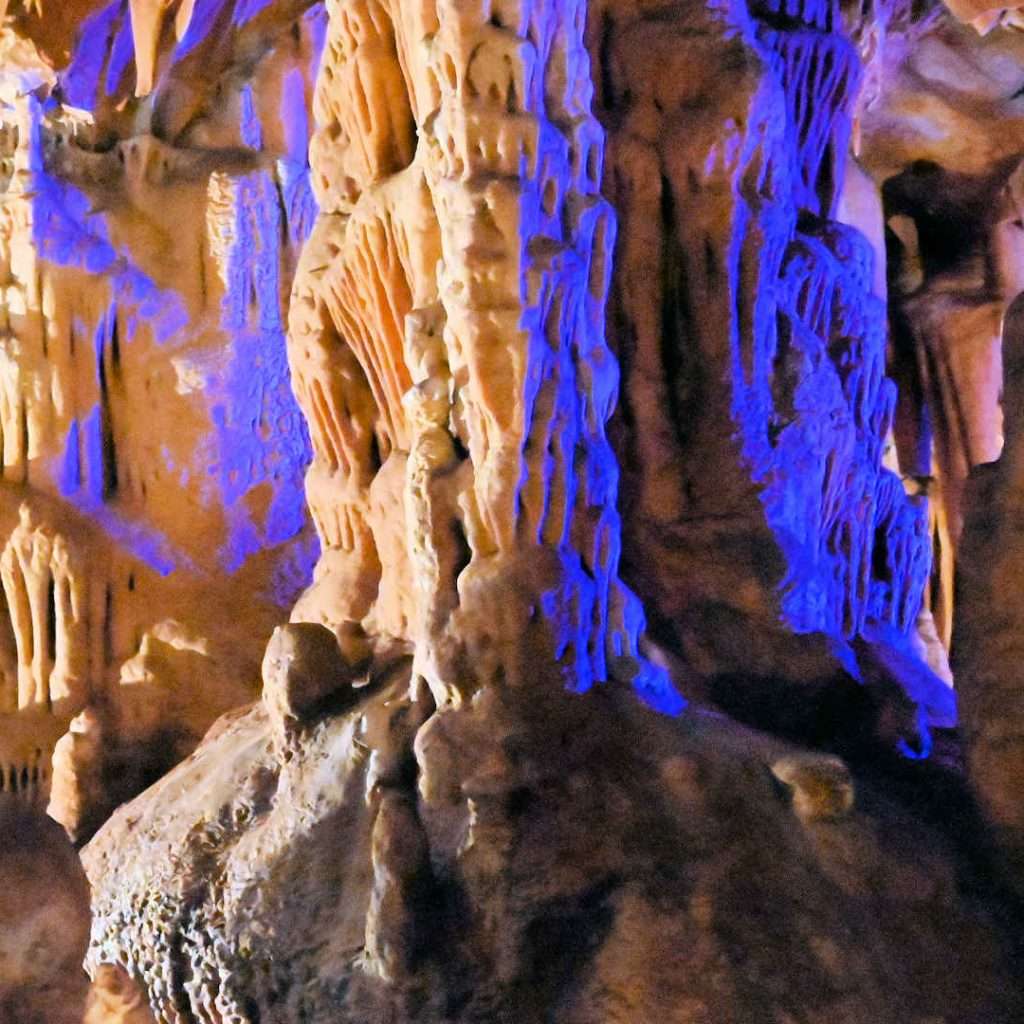
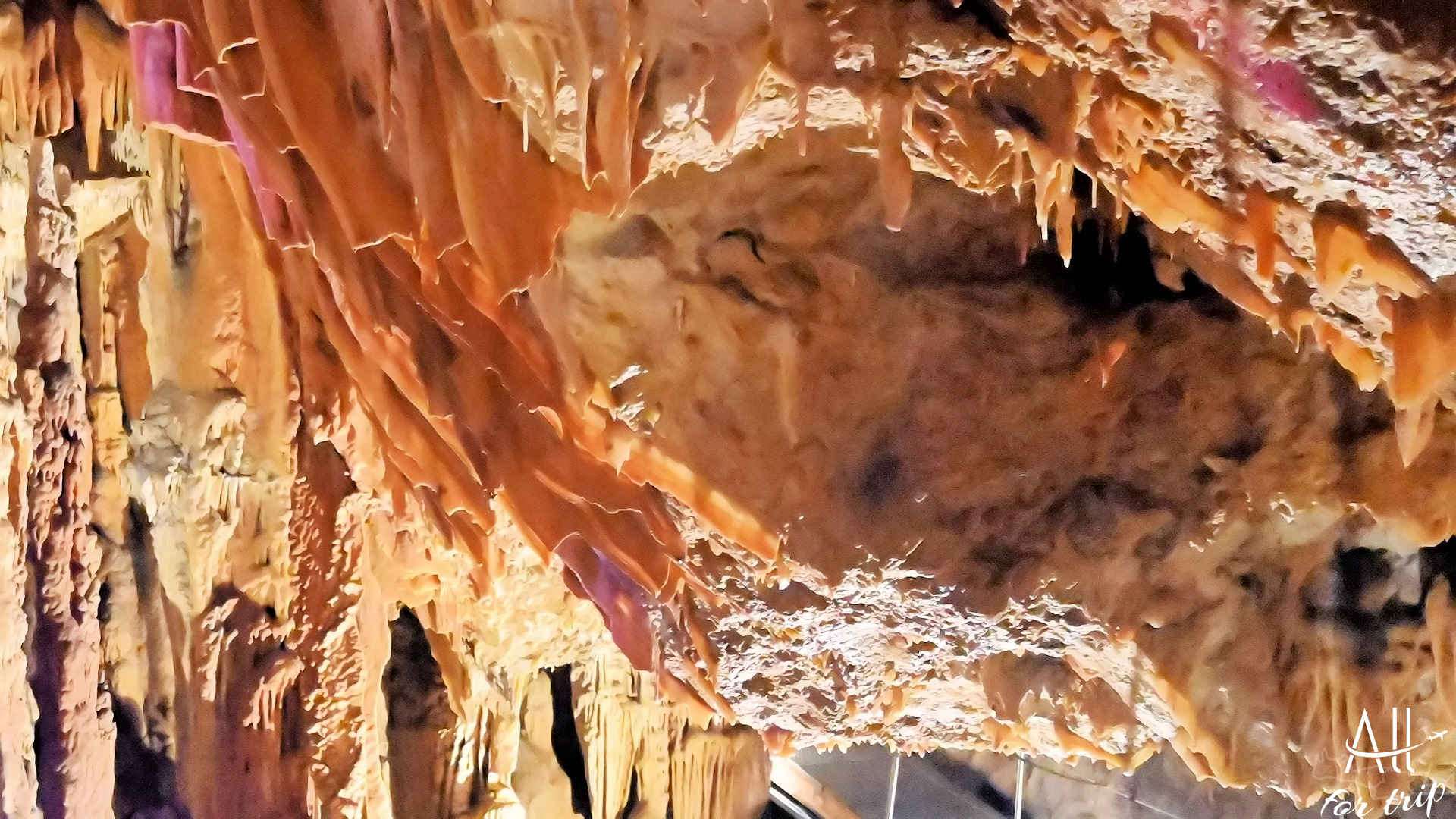
– the name of the cave is Sfendona – in Greek: sling
– according to the researchers, the age of the columns in the cave is 5 million years old
– ceramics and stone tools from the last part of the Stone Age, the Neolithic: 7000 BC
– the skeleton of a lost boy from 1100 was found in the cave – probable, that the small child got lost in the labyrinth of the cave
– many animal skeletons were found in the cave, from which the researchers concluded: shepherds and their animals lived in the cave for hundreds of years
– the cave was revealed by Greek speleologist Anna Petrochilou in 1966
– for some of the 14 rooms, she gave names to the some localities: side church, sanctuary, organ chamber, the Parthenon, the Metropolis and the Hall of the Lost Child
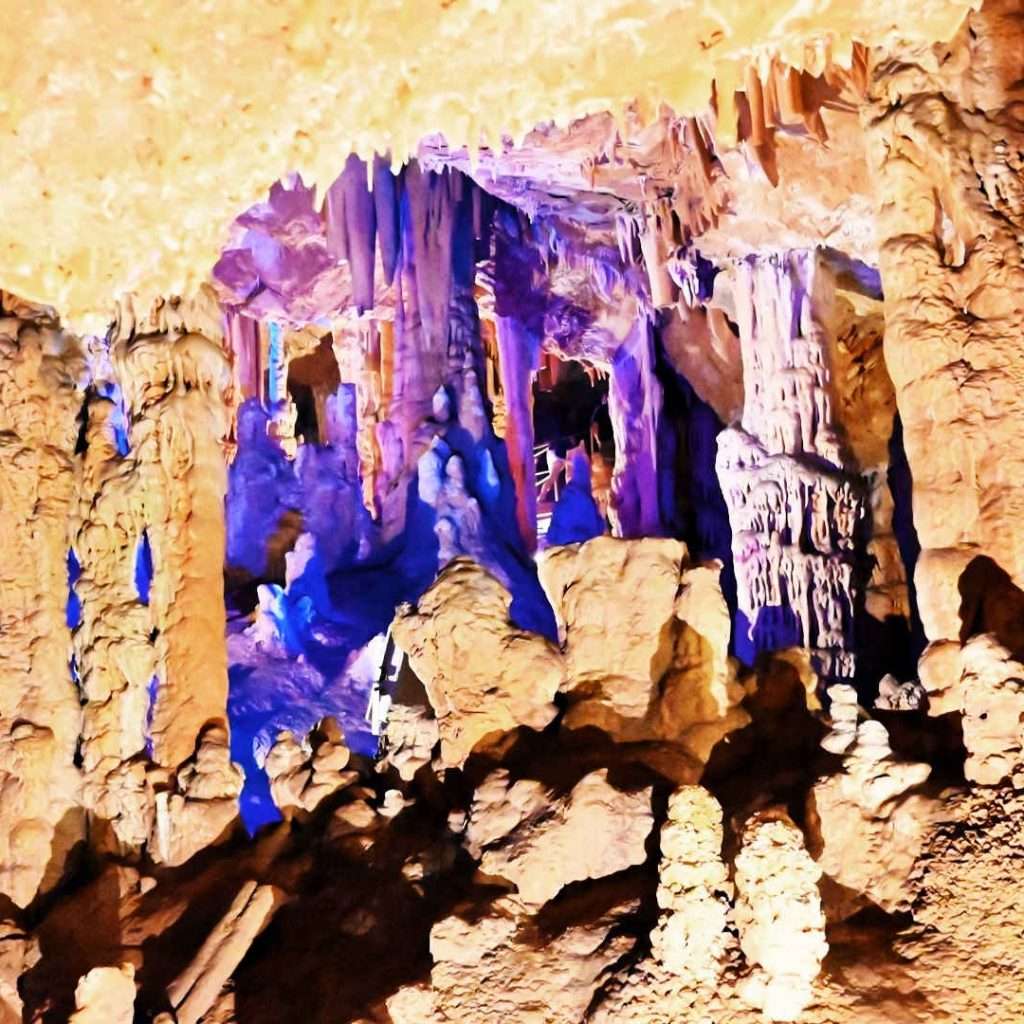
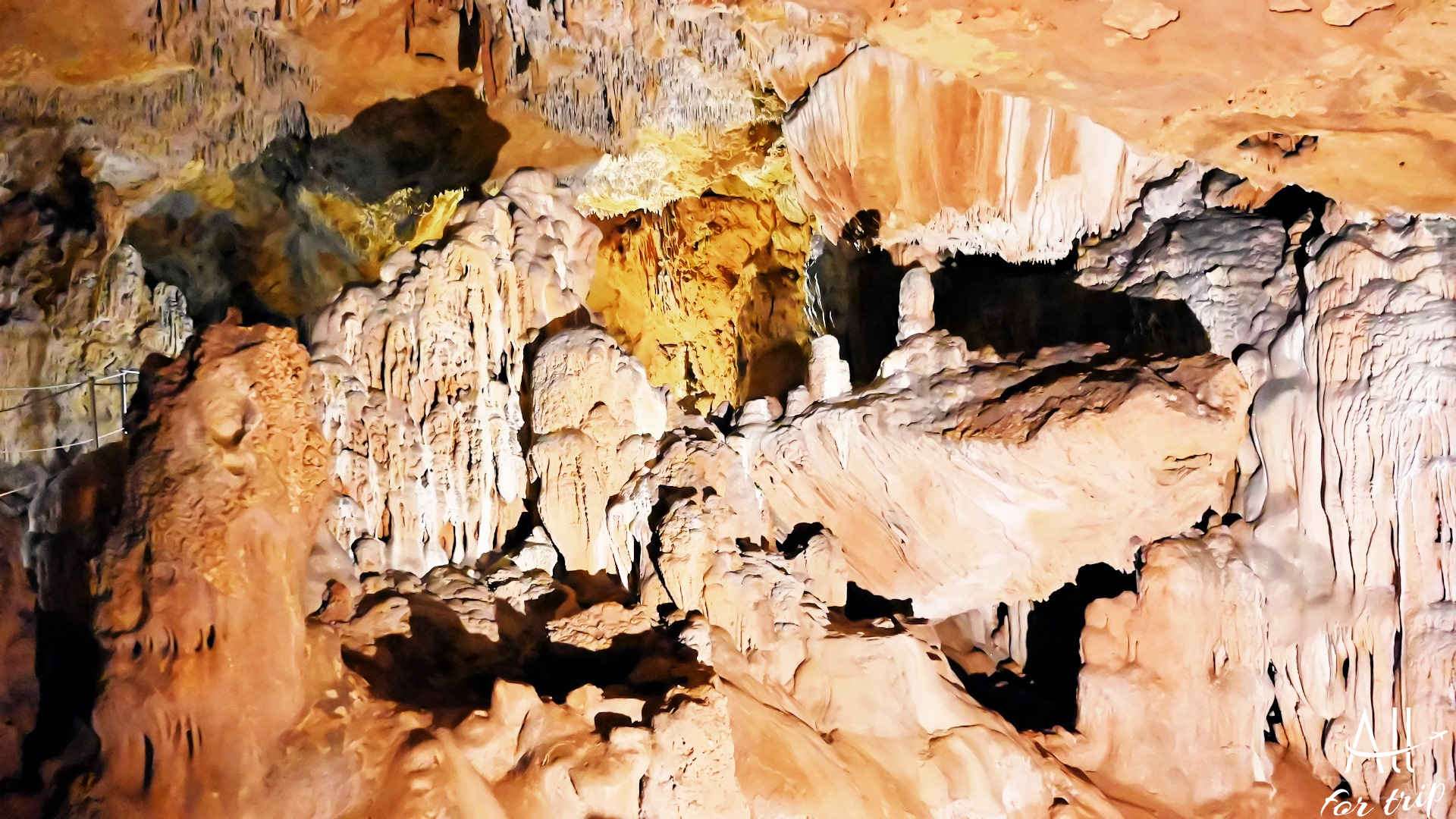
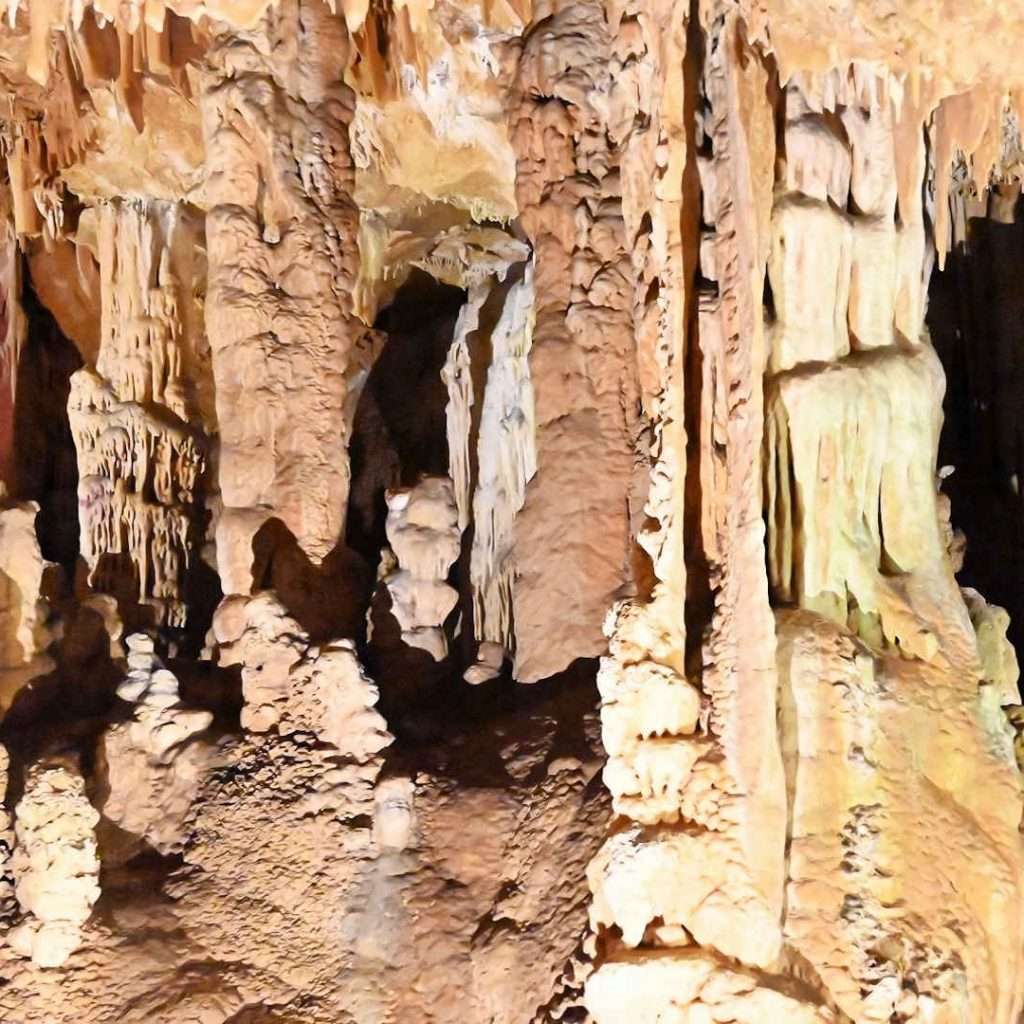
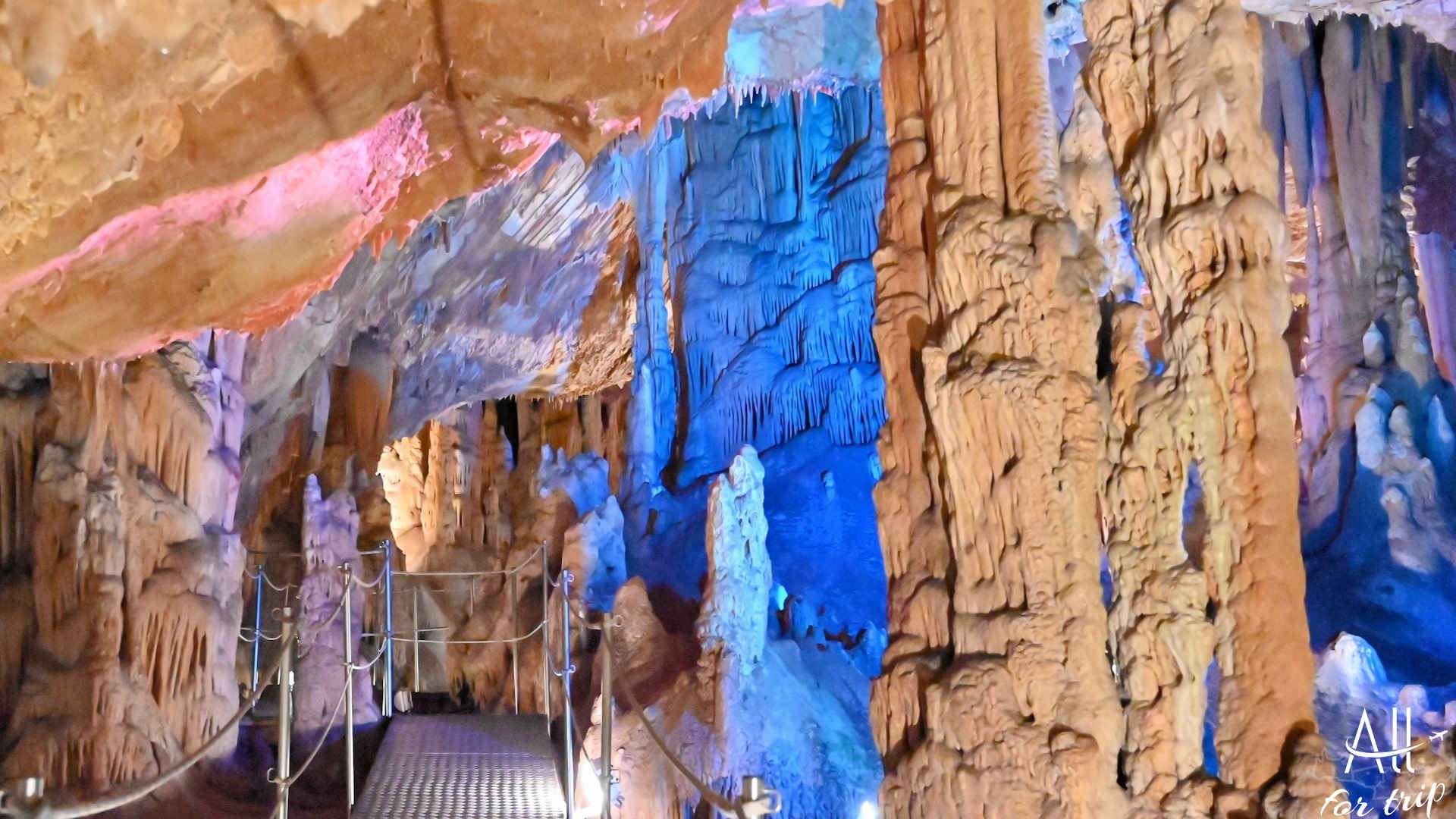
– the area of the cave is 3000 square meters
– the length of the cave: 145 m, of which only two-thirds can be visited, where a 270-meter sidewalk has been created: therefore, visitors can safely walk and admire the stalactites and stalagmites between the huge columns
– they can admire the “cave pearls” – they are pearl-like clusters of calcium salts and minerals
– the brilliance which come from tiny crystals of calcium carbonate is so impressive
– visitors need not worry! – because four bat species and dozens of invertebrate species live in the cave: snails, spiders, false scorpions, wood lice, millipedes, cave crickets, etc. – some of them are colourless and blind
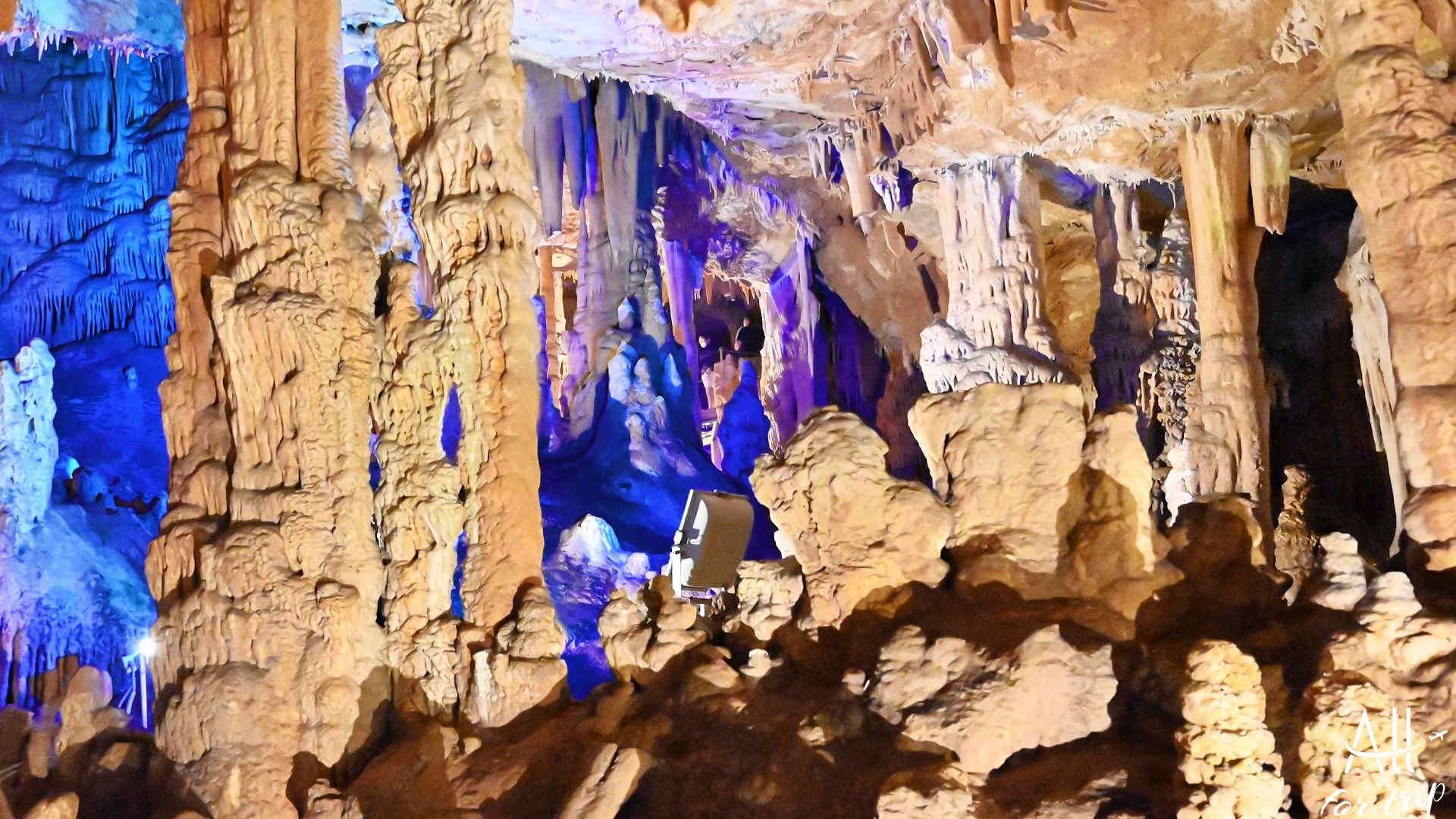
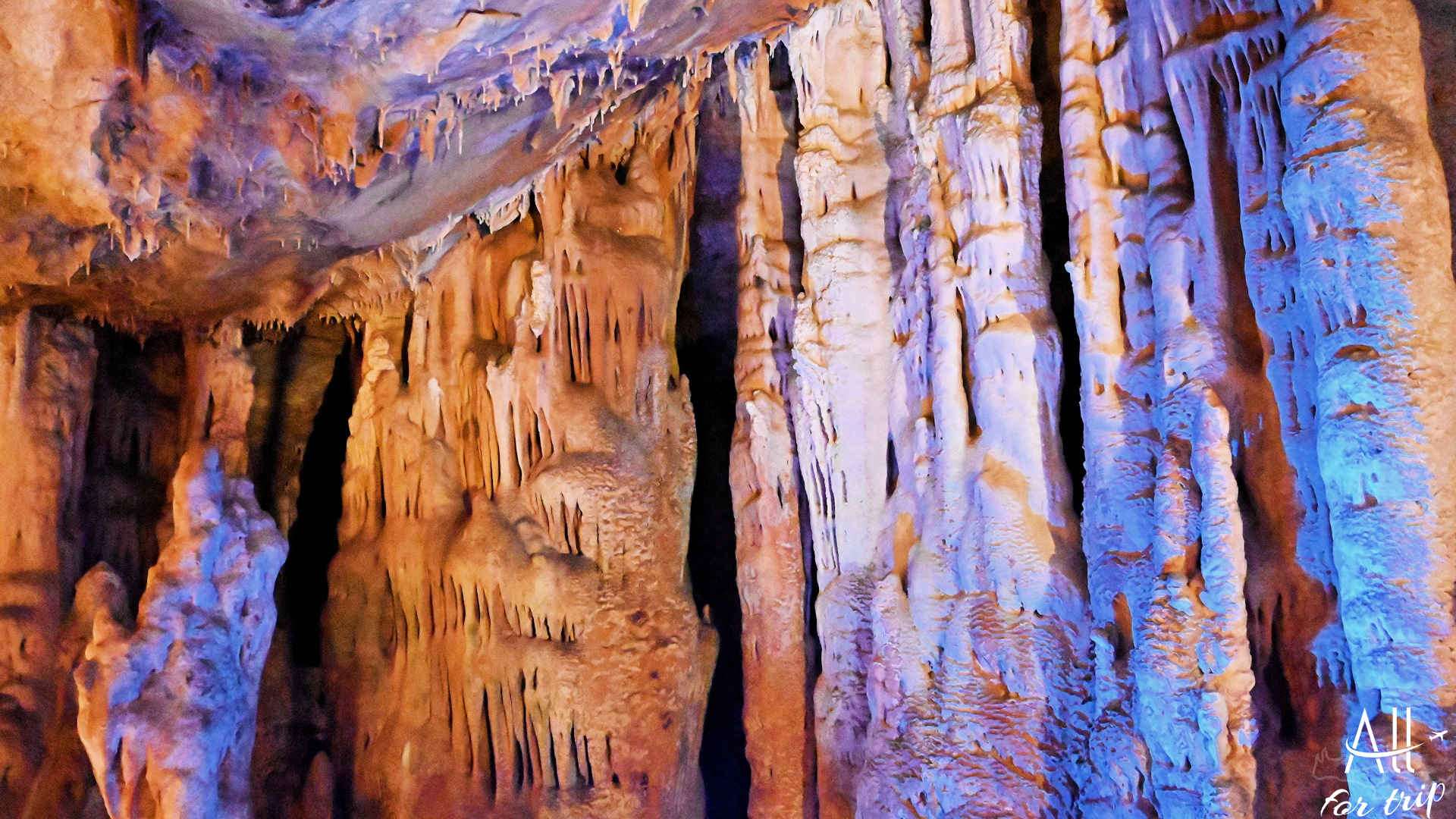
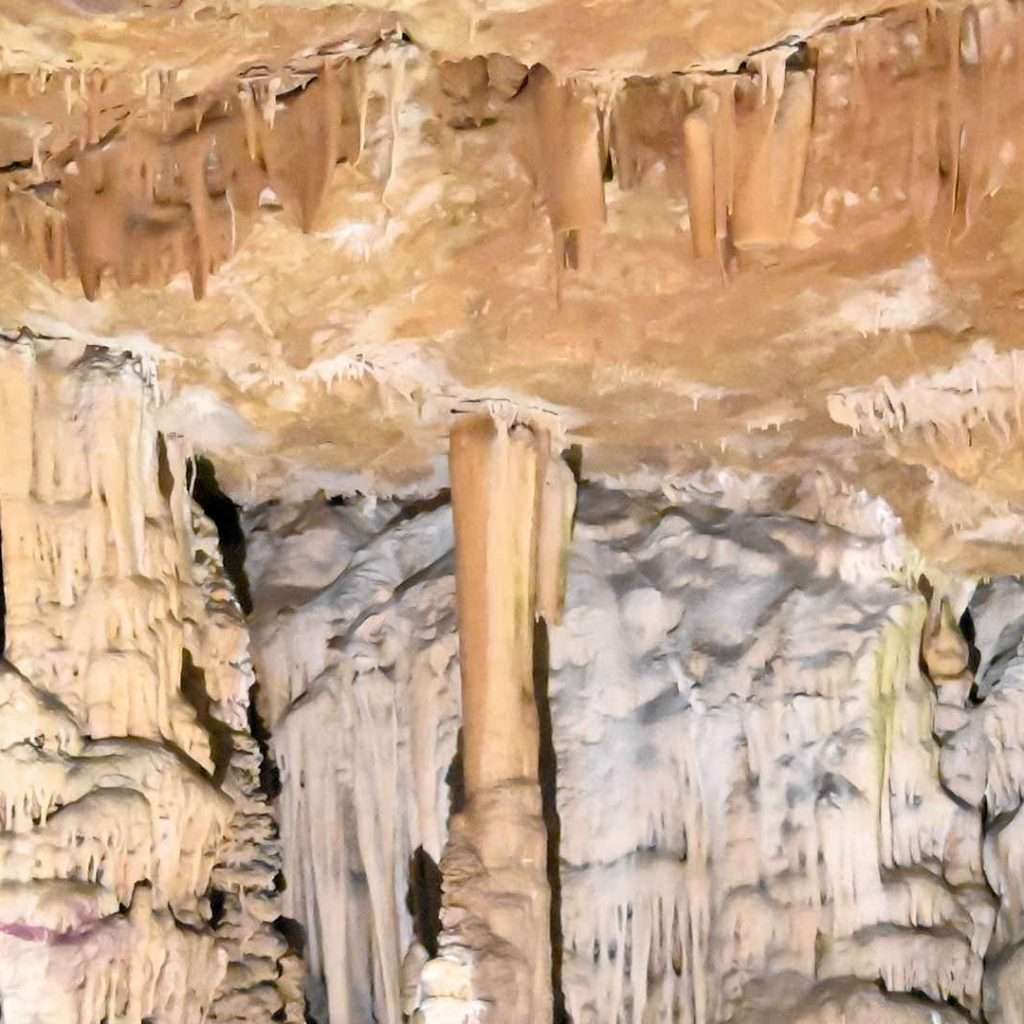
LOCAL LEGENDS ABOUT THE CAVE:
The legend of the boy’s death:
Locals call the cave “Sfendonis’ Hole”, because a Sfakia rebel: Sfendonis was hiding in the cave.
Sfendonis was roasting meat near the cave entrance, when the boy spotted him. As his hiding place was discovered, he became angry, and kicked the boy with his boot so hard: that the boy died.
Legend of the name of the cave:
There lived a beautiful fairy in the cave, who came out of the cave every day to fetch water from the nearby spring.
When the shepherd saw the fairy, he immediately fell in love with her, but the fairy always ran away and disappeared. The shepherd did not know: where his love lived.
When the shepherd saw the wonderful fairy again, he wounded her with his sling. The wounded fairy fled to the cave, but she lost her bloody handkerchief at the entrance to the cave: therefore the fairy’s secret was revealed.
Hence the name of the cave: Sfendona, which means sling in Greek.
